MECHANISMS OF CREATIVITY
The theoretical analysis of creativity and its mechanisms can be based on the original, unconditional, self-sufficient triune structure of the first essences of Being-Absolute-Nothing.
The position of the basis of the ultimate, unconditional and most capacious metaphysical foundations suggests that all existing, as well as any new and possible concepts of creativity will harmoniously fit into the three mutually agreed paradigms that are explications of the original fundamental entities. Systematic concretization of extremely abstract primary essences and the consistent splitting of universal mechanisms of creativity will allow us not to lose the fullness of content and come closer to the discovery of the deep essence of living, pragmatic-existential creativity.
THREE METAPHYSICAL PARADIGMS OF CREATIVITY
1. Being. Creativity as the creation and creation of things by the act of realizing the creative will of the Demiurge “Let it be!” And their subsequent transformation.
2. Nothing. Creativity as non-doing, “wu-wei”, as nurturing, “caring”, allowing things to self-beget and self-develop, following their inner nature.
3. Absolute. Creativity as co-creation with the Universum, as a synergistic deployment of a single creative principle, a structure-forming principle and creative potential.
І. FUNDAMENTAL AND GENERATING CATEGORY - BEING. The dominant paradigm of the West. Creation as a free act of the will of the Demiurge, and not the spontaneous emission of the creative energies of the original. Creativity is understood as the process of generating and producing something new, as an increment of being and bringing novelty into existence. This paradigm contains a number of interrelated definitions of creativity:
1. Activity. Creativity is a special form of human activity, aimed at creating original and unique products of culture, qualitatively new spiritual and material values, as well as the person himself as a creator, to discover previously unknown patterns of reality, to achieve new, aesthetically perfect and socially significant results.
Creativity is understood as constructive, productive, constructive, subject-practical activities aimed at transforming the natural and social world in accordance with the goals and needs of man.
2. Dialogue. Creativity is a process of productive interaction, dialogue, meeting a person with the world.
3. Problem solving. Creativity is the process of effectively and elegantly solving problems with the birth of a new quality and result.
4. Self-actualization. Creativity as a universal way of self-creation and self-realization of personality.
The Creator is understood as a creator, a converter as a “Faustian personality”, which is guided by the motto: “To re-melt the fusion of creation, breaking the harmonious links, the task of eternal labor” (Goethe).
The main criterion for creativity is novelty, manifested in originality, uniqueness, originality, and unexpectedness of its result.
ІІ. FUNDAMENTAL AND GENERATING CATEGORY – NOTHING. The dominant paradigm of the East. Tao does not create the world, the world is generated by itself and spontaneously develops from itself. Tao creates the world in an absolutely free and unconditional action, without any effort. The content of creativity in this paradigm is determined by the following system of interrelated essential characteristics:
1. Inaction. Creativity is like accepting and freeing the world, giving it spontaneity and allowing one to reveal one’s own nature by suspending inner dialogue, achieving inner emptiness, peace and quiet.
In this way, the achievement of inner constancy and the alignment of the “I-center” with the “axis of the world”, animates reality, causes all objects to spontaneously change, move and be realized. Stopping, engaging a pure center of equanimity: “not-I” (anatman), “no-mind” (acitta), “no-desire” (apranihita), “non-effort” (anabhogacarya), “non-act” (in -way), causes an unexpected dynamization of the world, everything immobile, unyielding suddenly begins to move and be realized.
Self-purification, suspension of internal dialogue, the achievement of inner emptiness, peace and quiet allows all things to freely follow their inner nature. At the same time, the world is created by itself, freely growing from itself. Everything is born itself when its time comes. It is important to know, expect and not interfere with the world to manifest itself.
“Cosmic emptiness is the nature of the Buddha. Buddha nature is non-doing. To non-existence can be brought only by non-doing, it means merging with nature. Free your mind and heart, become calm and things will start to develop themselves (Chuang Tzu).
2. Harmonization with the Universe. Creativity is understood as sensation, tune-up and submission to the rhythm of the Universe, following the law of conformity and moving balance. It appears as harmonization, balancing, putting the worlds in order, returning to the center and the ideal trajectory. The spirit of the artist enters into resonance with the cosmic rhythm and his actions coincide with this rhythm, are consistent with nature and without disturbing the natural course of things, obey the general law of causality.
The main thing for the creator is not to violate the rhythm of world development, but to change in accordance with it, not to transform, but to improve, not to create something new, but to cultivate. Creativity is understood as empathetic capturing of states and acting in accordance with them, as a skillful use of chance, as the ability to seize the moment and act according to circumstances.
According to the Eastern view of creativity, to create something new is to break the harmony. You just need to extract the right from Non-Being, which already contains everything in itself and manifest it in a new context. Beauty (fury) is born itself at the appropriate moment. It is important to catch this moment, not to miss the moment of the birth of Beauty, to feel its breath, the beating of the heart - then Art is born (TP Grigorieva).
3. Creativity as sprouting, cultivation, cultivation. “God creates the world with the act of creation (wei), and dao creates it with uncreation, which approximately corresponds to our word“ growth ”(A. Watts). Creativity is understood as awakening as release, allowing things to unfold from within according to their own internal laws, as care, as giving and creating conditions. Creativity appears as the disintegration of the world, the defrosting of entire independent structures, archetypes, the awakening of self-generating structures, the throwing of seeds into fertile soil, the awakening of something in the soul of another, the discovery and clarification of deep, intimate ideas. Creativity is not creation, construction or construction. All that is required, due, necessary, is already in the bud, it must be revealed, released from non-Being, vyrostit and strengthened.
Creativity is understood as liberation from the intricate, interfering, superficial, as clearing away places and paths. Cultivating, “feeding”, creating conditions, letting things follow their own path, be formed according to their rolled-up inner laws. Allowing all things to calmly, spontaneously and freely realize their natural potential and inner nature.
4. Creativity as a process of self- awakening , self-liberation, self-manifestation, self-disclosure, spontaneous and natural growth from the inside. Freeing one’s own mind, detachment and sincere revealing one’s own, true and nature. Creativity is not understood as a simple imitation, but following its unique nature, the deepest spirit akin to the spirit of things.
Creator - Noble husband, sage, teacher.
Criterion of creativity - Compliance with the original nature.
ІІІ. FUNDAMENTAL AND BREEDING CATEGORY - ABSOLUTE.
Creativity is understood as a way of the existence and self-revelation of the Absolute, as a self-manifestation of an everlasting origin, a curtailed order and meaning of the Universe.
At the same time, the implementation of the “absolute point of view” makes it possible to naturally harmonize the eastern and western paradigms of creativity.
Creativity appears as a transition from non-being into being (Plato), as the identification and manifestation of objects from emptiness. At the same time, Eastern philosophy states that: “The emptiness is formless, but the foundation of everything. Making non-being a being is the act of creativity ”(Suzuki)
I. CREATIVITY. Similarity, merger and co-creation of man and the universe.
1. Creativity is understood as universal existence , transpersonal identification, as dissolving and mastering the flow of superconsciousness, passing through it the universal flow of creative energy and meanings. Creativity is understood as the sphere of contact between the creative person and the Absolute Creator (Schelling) and as an individual statement and realization of eternal and absolute, transcendental principles. This mighty transcendental power appears as God, the Absolute, the Universe, and the Universe. The creators, with benevolence and mystical trembling, open up to the Universe and the ideas themselves, arise independently in the consciousness, so that they need only to write and reproduce.
2. Creativity, as the ultimate creative freedom of an individual creating himself, as an independent disclosure and realization of hidden creative meanings hidden in the depths of the soul. Creativity as “standing in oneself” and, at the same time, self-renewal, constant disagreement with oneself, the growth of creative being, the acquisition of new possibilities and degrees of freedom. Creativity as the courage to be, to be oneself, as the ability to discover in oneself one’s own unique version of universality.
3. Creativity as a merger with a stream of self-generated changes, as a dissolution in the Higher Mind, the initial intention of which manifests itself in a person in the form of a desire for a new, evolutionary development by trial and error.
Coordination and harmonization with the creative flow of evolution is manifested as harmony with its deep essence, innate creative power, representing the collapsed reflection of cosmic creativity.
Any creative effort of the deep-seated creative I, containing the folded and concentrated universal laws of cosmogenesis, its self-disclosure and advancement to the Absolute, is accompanied by its counter plowing and movement to man. Each act of creativity is instantly accompanied by the unfolding of the Creative Essence of the world to meet, human creativity occurs within the oncoming stream of Creativity. The world is continuously created and re-created by a person who has entered and merged with the flow of self-generated changes.
East. Creativity is understood as the overcoming of the boundary between the inner and the outer, man and the world, as the achievement of a state of non-duality, inseparable unity, in which the inner nature becomes similar to the space of the Universe. Creativity is to be as the likening of man to the "natural principle" of things, as a fusion with the material being transformed and joint creativity with nature. Works of art are born independently and spontaneously in a continuous stream of changes and involuntarily grow in the hands of a creator who obeys the inner call of things. "The beautiful will be born itself at the appropriate moment. It is important to capture this moment" (Koyrai).
Ii. CREATIVITY AS VIEW, VISION. Creative vision in the Western paradigm is understood as a wonder of the world, the creation of a continuous self-sufficient novelty, the creation of a fresh and immediate relevance, independent of the past and the future. The demiurge creates the world in accordance with the model (παράδεγγμα) of creation, which is not the external creator, but is cognized by inner contemplation. The highest form of activity is self-contemplation, and the ability to create is subordinated to it and is only a manifestation of the fullness of perfection, which lies in contemplation (Plato, Tim. 29A).
Creativity consists in opening a new look, new meanings, approaches, points of view.
Vision allows for a new, creative approach to a particular problem, to look at it from an unexpected, unusual point of view and to discover new relationships.
Creative vision is understood not only as impartial testimony and not even as cordial spiritual or intelligent contemplation, but also as a spontaneous, powerful elastic movement that disintegrates into many different levels of subtle efforts.
Creative vision realizes the leading principle of the Eastern paradigm of creativity - to connect the eternal and the transient, to preserve the spirit of the past, but to find a new way, an unexpected original method of reviving the old. The main thing is not to create something new, but to reveal what is already inherent in nature, to save entities and express them in a new way, to see, explain, interpret, describe in a new way. "The purpose of the renga is to express the old, well-known truth in a new way ... The final destination of the renga is to revive the unknown" (Nijou Yoshimoto)
Creativity appears as the attainment of a state of enlightenment in which the world around us begins to see in a completely new, unexpected light. It is precisely the freshness and purity of perception, the desire to see the invisible, the openness to potential beauty that makes every moment new.
Seeing as a free flow of context, a sense wind, to anything unattached, incessant and unavoidable transfer of space into space, transfer of emptiness into emptiness, “readings” into “purity”, possibilities in possibility, properties into properties, one space of senses into another.
Creativity as a State, as a coincidence, deep self-consistency of the highlight streams of the vision of man and the Universe. “The eye with which I see God is the same eye with which God sees me. My eye and God's eye are one, and the face is one, and wisdom and love are one” (Eckhart). Holistic vision as an "eye directed inward", allowing you to see God in the depths of your Self (Jacob Boehme).
ІІІ. CREATIVITY AS MEANING, as the discovery of universal and the creation of new creative meanings. Creative constitution (from lat.constituo – to establish, form) is understood as a specific creative activity of consciousness, during which it not only perceives the world, but also actively produces it from its components, recreates it in itself, from itself and for itself. This process of creative thinking and meaning formation, which unfolds within the vision. Creatological constitution is understood as a sense of affirmation, sense-saturation, as the discovery of universal and universal meanings, endowing objects and phenomena of the world around with developing creatine senses. The constitution is not understood as receptivity, but productive activity, construction and ascension of meanings, as the existence, cognition and experience of the world in the stream of its independent creation every second.
Creativity consists in seeing and uncovering the deep inner meanings of objects and phenomena that reflect universal principles, laws and tendencies of reality, as well as their subsequent incarnation.
Co - constitution - is understood as a simultaneous, creative sense-forming activity of a person and the Universe. Creativity is understood as being-in-the-world, as a movement of flame-in-light, as an active sense-making and constituting of the world within the grid of universal meanings, in the space of aesthetic a priori that make things and phenomena possible.
East. Creativity is understood as the search and discovery of the spirit, the fundamental meanings, the inner form of things, purification, the release of the beauty of the structuring principle, as following the universal credo of Oriental creativity "Do not do, but find and open." Creativity manifests itself in the discovery of fundamental meanings, and not of their temporary external manifestations, in penetrating deep into texts, beyond the plane of appearances. “Do not follow in the footsteps of the ancients, but search for what they sought” (Kukai). At the same time, all things are vertically integrated, strung together on found common meanings, are connected by single states, are fused by the cosmic principle of mutual compassion.
At the same time, artistic creativity manifests itself as conferring a sense of everyday man-made objects and objects of nature, as introducing the old into the new context, as a result of which the old spontaneously acquires new qualities, connections, structures and fresh meanings.
The Creator - appears as a stream of co-creation, as a universal, living order unfolding from the depths of the inner world, as a living body of creative vision, a dynamic, self-generating kreatological space whose interpenetrating poles are the creative I and the Universe.
It makes no sense to talk about the criteria of the highest form of creativity, how it is impossible to talk about the criteria of pure self-sufficient existence, the criteria of breathing, vitality and naturalness. The question of the criteria for creativity is as meaningless as asking: Am I asking a question?
The subjective criterion of creativity is the joy of inspiration, the qualitatively highest experience of absolute happiness, self-sufficiency and absolute power.
MECHANISM CONCEPT
The concept of “mechanisms of creativity” in a certain sense is an oxymoron. Thus, the mechanism is traditionally understood as a demoralized, repeating pattern, as a stable system of rigidly linked links, while creativity is viewed as the free overcoming of stereotypes and automatisms, as a continuous generation of novelty. A number of researchers, especially representatives of the existential-phenomenological direction (L. Binswanger, R. May), are cautious in studying the mechanisms of creativity, considering that the mechanistic doctrines are absolutely blind to everything truly new and creative. Through the network of mechanisms, the deepest, essential content of creativity slips, and excessive reflection freezes and stops the flow of free creative activity.
At the moment, the door to the area of knowledge of the true mechanisms of creativity is only opening a little, so any mechanism must boldly reflect, be realized, automate and be used as a platform, a springboard for new takeoffs and discoveries.
The disclosure of the mechanisms of functioning and implementation of the basic laws of the system is the ultimate stage in the development of any science, the highest degree of penetration into the essence of the studied phenomena. At the same time, the final stage of the theoretical analysis is dialectically combined with the highest practical orientation of science and manifested in the conscious use of activity mechanisms as techniques that can be regulated and controlled.
In the most general case, a mechanism is a structurally stable and repeatable combination of processes or operations underlying a certain type of activity. The mechanism always has an expanded temporal structure and is a recurring pattern of changes that automatically arises with appropriate stimulation.
INTEGRAL, MULTI-LEVEL AND DYNAMIC SYSTEM OF CREATIVITY MECHANISMS
When studying the mechanisms of creativity, it is necessary to talk about a holistic, multi-level, dynamic system of mutually agreed upon, interacting and mutually reinforcing mechanisms.
Identification of universal, universal and psychological mechanisms of creativity is the most effective way to uncover the deep essence of creativity, and its subsequent practical implementation through simple, understandable, natural and extremely effective techniques of creativity.
The study of the essential mechanisms of creative activity can occur in two ways, firstly by fixing the most successful, effective techniques, free, unfolding from within the flow of creativity and secondly, by reducing the diversity of existing mechanisms into self-consistent systems. In both cases, isomorphic, holographic generating matrices reflecting the most profound laws of the structure and development of the world will act as the organizing framework.
Currently, the problem field of multi-level mechanisms of creativity is a disorderly set, characterized by overlapping clusters, lacunae and contamination of values, a set that requires finding simple and succinct ways to represent it.
The choice of this method primarily depends on the task that the researcher sets himself. In order to initially guarantee the utmost completeness of the description of the existing and possible value space, it is advisable to apply the system description method V.А. Hansen (1984).
PENTABAZIS
This method allows you to present a system of mechanisms in a simple, complete, convenient for perception and mental manipulation of the form. In addition, the method has a high heuristic potential, as it helps to reveal the "centers of condensation" of values, manifesting the essential core of the phenomena, as well as to detect "white spots", "active places", imperiously requiring their filling.
The conceptual Pentabase is selected as the initial organizing matrix, consisting of four adjacent and one unifying concepts. Since the limiting characteristics of any object are spatial, temporal, informational, and energetic characteristics, the Matrix is proposed as a fundamental Pentabase consisting of four adjacent, connected in pairs of concepts (Energy - Information, Space-Time ) and one unifying ( Substrate ).
Table 1 The original pentabasis of the structure of the world
| Information | Space | |
| Substrate | ||
| Energy | Time |
At the same time, the associative and semantic power of the method is manifested in the possibility of combining and imposing various bases reflecting different meaningful sections and levels of organization of the world. This simple operation helps to uncover new unexpected relationships and semantic commonality between topologically consistent concepts and thereby saturate them with new properties and meanings.
ОНТОЛОГИЧЕСКИЕ (СУБСТАНЦИОНАЛЬНЫЕ) МЕХАНИЗМЫ ТВОРЧЕСТВА
Так онтологический уровень анализа позволяет наложить на исходную пента-матрицу новый пентабазис, состоящий из двух взаимосвязанных пар обобщенных категорий Бытие (Материя-Порядок), Ничто (Пустота-Хаос), которые объединяются, взаимосогласовываются такой центральной и предельной категорией, первосущностью как Абсолют.
Фундаментальные категории реализуются с помощью отнологических механизмов, выражающих глубинные закономерности функционирования мира.
Табл.2. Онтологические механизмы творчества
| Information ПОРЯДОК 1. Упорядочивание 2. Формообразование | Пространство ПУСТОТА 1. Вакансизация 2. Аттендизация | |
| BEING Созидание Материализация | Субстрат ABSOLUTE 1. Recursion 2. Holographisation 3. Transcentering 4. Transdimentization 5. Balancing 6. Monadization 7. Complementation 8. Pulsation 9. Transorganization | NOTHING Nichtozhenie Nigilyatsiya |
| Energy MATTER 1. Accumulation 2. Effect | Time CHAOS 1. Chaotization 2. Dissolution |
Онтологические механизмы представляют собой по сути универсальные, инвариантные и динамичные паттерны, выражающие порядок переходов и трансформаций в любых сферах реальности, временные структуры, которые могут быть заполнены различным качественным содержанием.
Онтологические механизмы инвариантны ко всем предметным сферам и уровням сложности, а их сущность зависит от уровня развития личности, ее видения, позиции целей, а также от качественного содержания пространства и сферы функционирования.
Так Леонардо да Винчи описывая мир с помощью онтологических механизмов природы, всегда пытался усмотреть в них всеобщие, универсальные и высшие смыслы. В то же время при включение онтологических механизмов в перенасыщенную смыслами семиосферу и социокультурную среду, в особо организованное креатологическое пространство, представляющее собой многократно взаимовложенные миры высших творческих состояний и отзывчивой, пластичной и вдохновляющей среды, позволяет насытить их качественно высшим содержанием и трансформировать в механизмы творчества.
І. BEING
CREATION — the creation of new forms and their embodiment in reality or the materialization of spirituality.
Materialization is understood as the creation of living matter of different levels of organization with concentrated and highly organized thought power. At the same time, matter is able to take the form of self-contained integrity, including life situations, artifacts, new structures of the inner world, properties and qualities of other personalities. The materialization of the deep structures and relations of the natural world is objectified in the form of sound, harmonious sound and is heard as the melody of the spheres.
На личностном уровне материализация понимается как воплощение мечты, как создание насыщенного положительными переживаниями и существенными деталями яркого мыслеобраза, как его регулярная и повторяющаяся активизация, переживание и решительное воплощение в реальные жизненные факты и события.
Материализация включает в себя целый спектр смысловых оттенков и может проявляться как воплощение, онтологизация, объективизация, опредмечивание и овеществление.
Воплощение понимается как претворение в жизнь предельно абстрактных идей и феноменов, а онтологизация как превращение модельного мира в реальный, как трансформация построенной системы представлений о закономерностях мира в реальность. Подлинная онтологизация, сливается с объективацией и предполагает предельное соответствие структурно-функциональных моделей и их реальных образцов.
Опредмечивание понимается как переход и воплощение внутреннего содержания личности в предмет, как раскрытие его ценностно-смысловых характеристик и превращение его в социокультурный феномен, как выражение художественного замысла в объективной, доступной восприятию форме, как реализация мысли в слове, в звуках, красках и вещественном материале.
Мощь и универсальность онтологических механизмов демонстрируется на примере овеществления (реификации), которая проявляется в таких разноуровневых и разносферных формах как овеществление социальных отношений, обезличение, деперсонификация человека, как религиозный, юридеский, социо-психологический фетишизм, как овеществление содержаний сознания при шизофрении и как защитный механизм психики. В то же время овеществление представляет собой процесс, посредством которого философские и метапсихологические структурные концепты превращаются в поддающиеся мысленной манипуляции объекты, как вид тропа и разновидность метафоры, как инновационная деятельность по преобразованию идей в продукты, как механизм художественного творчества и овеществление души.
1. MATTER
1. 1. Accumulation (from the Latin. Accumulare to accumulate, collect) is a consistent accumulation of creative energy, knowledge of traditions, values, gathering of meanings, experience, increment of reserves and possibilities, arming with effective methods, techniques and methods of creative action. In the procedural understanding, this mechanism of creativity is understood as the accumulation, accumulation, compression of material, drawing and sealing strokes, filling white spots, solving a giant crossword puzzle, sequential filling of the initially specified structure (R. Weisberg).
Accumulation as a creative mechanism of avant-garde art is one of the collage techniques, “assemblage”, which consists in piling up, combining in one limited space “objects, real objects and their parts” (Armand, Jean Dubbüffe).
A private manifestation of accumulation is creative accretion (Latin accretio “increment, increase” from accrescere “accretion”), representing the process of growth, increment, and intensive absorption of information, knowledge, and experience from the surrounding informative space. The essence of creative accretion is revealed with the help of the pearl metaphor, reflecting the process of gradual and slow increment of the system design parameters.
1.2. Effect (from the Latin. Effectus - performance, impact, result) is understood as a continuous commission of a self-sufficient, absolute and pure action (actus purus), aimed at a productive result and getting the maximum effect.
The effectisation mechanism is understood as a rhythmic and intense realization of a flawless, assertive, powerful force, ultimate energization and intensification of activity, mobilization of the body's physiological reserves, saturation of the action with sthenic emotions and following powerful impulses of instinct. This is a reckless, non-lexical and fearless commission of an action that overcomes all doubts, lack of information and understanding. “First you have to get involved in a difficult battle, and then we'll see” (Napoleon).
From this point of view, the original is a living, pure stream of action, into which a thought, which stands out and springs from action, is woven.
2 ORDER
2.1. Ordering is understood as a fundamental ontological mechanism manifested as a process of reducing entropy, overcoming formlessness and suppressing chaos, as finding invariants and inventing new large categories, as structuring and rhythmizing the world. “Creativity is an act of ordering” (Le Corbusier).
2.2. Formation is understood as a vision, extraction and awakening of absolute chaos of the chaos of ideal forms, their organization and transformation into harmonious integrity. Shaping manifests itself as the process of creating, drawing the outlines, contours of the object, “enveloping the forms and types of the formless and not having the form” (Dionysius) and at the same time
as the process of creating a new content, aesthetic form, which is the essence, purpose and driving force of objects.
Formation is carried out in the form-building environment of socio-cultural and natural factors and includes the processes of creating compositional schemes, plans, models, finding the very principles of construction, structurization and construction of the form from the inside. In literary work, shaping is understood as the creation of a system of creative techniques, expressive and visual means of artistic work. Creative shaping is understood as a dialectic process of unfolding recursive cycles of interconversion of content and form, which can itself become a new content directed towards finding the original and highest forms of forms.
Forming involves the use of topological properties of space, the manipulation is not the content and values, and the relationship between them, that is, their structures and dimensions (Margaret Boden). It is the use of topological properties of space, the transition to a new dimension is the source of brilliant discoveries in science and art. So Kekule's simple transition in the representation of bonds between atoms from straight to ring made a revolution in chemistry, as well as the introduction of Giotto into the painting of the third dimension, was the beginning of revolutionary changes in the visual arts.
ІІ. NOTHING
Deprivation is understood as the destruction of obsolete forms and the destruction of objects that become barriers, hindrances in the way of progressive development and formation.
Creative nihilization (from lat. Ninil - nothing, turning into nothing) is understood as elimination, (from Lat. Eliminare - expel, ex - from, limen - threshold), exclusion, elimination of everything superfluous, superficial, insignificant, harmful, like the destruction of all aggressive and harmful effects, such as stopping and minimizing unnecessary, vain actions.
The ontological nature of nigilation manifests itself in the variety of forms of its representation and in the cultural-historical evolution of the very content of the mechanism. His creative character is already emphasized in Indian philosophy and mythology, in which Shiva, the god of creativity and destruction, periodically destroys and purifies the universe, burning all the gods and creatures with the brilliance of his third eye, thus giving place and beginning to a new life. In philosophy, nihilization is understood as the destruction of what impedes being, as the destruction of things that hide the Absolute, as “wiping a clear vision mirror from dirt and soot”. Nigilation appears as clearing, eliminating interference and old harmful forms, like redistributing elements and establishing new, useful combinations.
In the socio-economic sphere, nigilation manifests itself as “creative destruction”, as a mechanism that cleanses the economy of everything that has become obsolete, stagnant and ineffective (J. Schumpeter). In the postmodernist paradigm, the essence of artistic and scientific creativity consists in the destruction of the external and internal borders in art and science and in the liberation of the libido (Liotard).
Understanding the essence of this mechanism is impossible without reference to the cultural and creative beginning. So destructive forces are needed in saving human life and can serve creative purposes, but one cannot concentrate on destruction without justifying it with creative creativity (S.L. Frank).
1. VOID
1.1 Vacancy (from the Latin. Vacans - empty, free) is understood as a vision and the creation of internal voids, gaps and places in holistic objects, as a concentration on the lumens, dilution and expansion of transition points. This mechanism manifests itself as the devastation and liberation of worlds, the clearing of wholeness and space. When vacanising, the main focus is on the enclosing space, spaces and gaps between things, while everything solid and material becomes transparent and invisible. Devastation of worlds and spaces, frees them from congestion, equalizes all objects, gives them openness, fluidity and flexibility. In relation to the individual, vacancy is manifested as self-purification, interruption of internal dialogue, the liberation of the mind and heart, the attainment of inner emptiness, peace, silence and peace. At the same time, an internal stop and silence allows you to plunge into the depths of your true, creative, universal self.
In Eastern philosophy, emptiness (shunyata - from Sk. Śūnyatā) is understood as the essence of all things, as the highest, unique and authentic reality that gives things existence, creative essence, strength and usefulness. Here, emptiness appears as a place of self-generation of all things and a condition for self-disclosure of essence. Emptiness is “this is where all existence reveals its self” (Nisitani). In addition, emptiness is endowed with an unusually powerful creative potential, and therefore it recursively self-consolidates through the mechanism of “Shunta shunyata” (emptying emptiness).
In artistic creativity, vacancy is presented as an aesthetic ideal and an effective technique that activates the creative imagination of viewers and readers. “The meaning of the picture is sumy in an unfilled space” (Kawabata).
1.2. Attendization (from the Latin. Attendere –wash, expand, stare, tendere - to let) manifests itself as plowing up spaces and spreading and clearing worlds, creating liberating spaces, creating capacities for opportunities, radically expanding boundaries and opening new horizons. Attendization is understood as the creation of space, the expansion of horizons, tracing, the creation of voids and places, powerfully demanding its filling. This plowing of multi-level, including semantic boundaries, the creation of extremely common metaphysical, empty terms, organizing and organizing reality, opening "windows into absolute", highlighting empty places in maps, matrices and symmetries.
Emptiness without borders appears as a kingdom, as a storehouse of possibilities, mystical potency, as a space of extremely concentrated, minimized possibilities, the excitation of which generates a chain reaction of the generation of infinite possibilities. Emptiness is understood as openness, as productive, accommodating openness, as something that can let in (Heidegger).
2. CHAOS
2.1. Chaotization (from the Greek. Chaos - gaping; chasco - razuvayu) is understood as an increase in creative disorder, uncertainty, nonlinearity and disequilibrium, as disintegration and disorganization of the whole outdated, inappropriate to new conditions, like breaking and destroying binding, inhibiting bonds.
Primordial chaos is understood as the world before creation, as generating the root cause of all things, as the eternal source of strength and renewal.
In philosophy and aesthetics of romanticism, chaos was conceived as the creative principle of nature, the effective force of the world process, as a form of expression of the individual’s absolute freedom. Using the constructive power of chaos and turning it into a harmonious, “intelligent chaos” is a way to achieve beauty and an ideal. (Schelling, Novalis).
In the aesthetics of modernism, chaos was understood as the creation of a creative environment, as the main source and mechanism of creativity. “There is a logic in that I start with chaos, and this is the most natural beginning” (P. Klee). In postmodernism, chaos is understood as a fundamental paradigm of attitudes towards text and the world, which are viewed as an structural rhizome, as an "intensive germplasm plasma", as a plural, mobile and self-creating semantic environment (Deleuze and Guattari).
In some trends of artistic creativity there is a special aesthetics of chaos,
manifestations of rebellious impulses and gigantic elemental forces, assertions of the whole oceanic, dynamic and grandiose. At the same time, chaos, understood as a "life-giving ocean", as "a life of abundance" gives phenomena a special vitality and strength (Tiutchev).
In the modern non-classical general cultural paradigm, a synergistic approach is affirmed, which is based on the idea of creative self-sufficiency of chaos and consists in recognizing the ability of open, non-equilibrium systems to self-organize, to independently generate complex structures and transition from a state of dynamic chaos to new organizational orders.
2. 2. Dissolution (from the Latin. Dissolutio - decay, decomposition, weakening) - the process of melting, melting, dissolving and deep decomposing the rigid structures of internal and external worlds, such as breaking of fixed bonds, releasing clamps and breaking barriers. In relation to the inner world, dissolution appears as both the loosening and dissolving of the regidic components of consciousness, the elimination of patterns and stereotypes of perception and thinking, which results in a semantic deepening of consciousness, updating its properties and contents. As a result of dissolution, disinhibition of deep-seated, ontological creative mechanisms takes place, the latent contents of consciousness and forgotten information are updated. Dissolution is understood as the dispersion of the contents of consciousness, as recentration, defocusing of attention. At the same time, an increase in the metaplasticity, transparency, and flexibility of the internal and external space is achieved. "The highest and most liberating value in art and criticism today is transparency (Transparenz)" (Susan Sontag).
ABSOLUTE
Ontological mechanisms of the deployment of the Absolute.
1. Creative recursion (from the Latin. Recurso - to return, to wake up again, the cycle) - is understood as causing a system of an infinite number of copies, which are reflected in each other, contain each other, create their new modified copies, which, in turn , exhaust all the wealth of combinations and possibilities and reflect the basic system themselves. (A.V. Anisimov).
Recursion is manifested as creativity in a homogeneous space, generated by the unfolding origins, the fullness of explications of the highest universal principles, values and wealth of human culture. Creative recursion is understood as a creative attitude to the very flow of creativity, the reflexive return and improvement of the process of creative activity, the discovery of ever deeper and more subtle techniques of creativity, the building of a rapidly collapsing spiral of creative efforts.
In the most general sense, a system is called recursive if it contains itself, as its integral part, and is determined using itself. Recursion is one of the fundamental principles of programming and is understood as the process of self-generation by the system itself according to programs (functions, algorithms) that contain a challenge to themselves, which in the process of implementation turn to themselves and call themselves. At the same time, according to the rules determined by it, it can create its own modified copies, interact with them and incorporate them into its structure.
Recursion is considered one of the linguistic universals and is a deployment that contains linguistic structures of its own and is a product of mutually nested sentences and constructions. Recursion is a creative form of language and thinking, a universal tool that allows you to create new useful and beautiful structures. A classic example of recursion in literature is the poem: “This is the house. Which is built by Jack. And this is wheat. Which is kept in a dark closet, In the house that Jack built ... ”(R. Kipling).
Creative recursion appears as self-generation, as the generation of endless new forms and sentences, based on the laws of generative, generative grammar. It is such a creative language that is able to create, on the basis of a certain aggregate of generative rules, the so-called “primary” novelty (N. Chomsky).
The basic model that generates a self-contained structure is reproduced in the model of the Buddhist dharma - the text that generates new texts.
In turn, recursive dreams are multiple dreams, the ratio and interaction of which gives rise to new contents and meanings.
An example of endless recursion is a situation where a lazy and intelligent machine creates its copy and transfers its functions to it, which, in turn, creates its next copy, which also builds itself a similar lazy and intelligent machine (S. Lem).
In dynamic terms, creative recursion reflects the rhythmic, repetitive nature of any type of activity, capable of providing an increment of content and the generation of novelty with each new cycle. Recursion determines the continuity, procedurality and the very possibility of the formation and development of phenomena, and serves as a condition for the reproduction and reconstruction of forms. The very act of establishing the self-identity of phenomena always reveals something new in them, not something that existed before the act.
In the paradigm of dyadic interaction, the creator appears as a recursive copy of the Universe, and the creative recursion process itself as a transference and infinite mutual inclusion of space into space, context into context, emptiness into emptiness, flow into flow, and creativity into creativity. The recursive-reflexive mutual reflection and mutual generation is expressed in the stories: “Looking at the moon, I become the moon. The moon I look at becomes me. I immerse myself in nature, connect with it ”(Saiga) or“ Zhuang Zhou dreamed a butterfly and he thought: was it his dream about a butterfly, or did the butterfly sleep about him ”.
2. Holographisation (from the Greek. Holos is all, complete and grapho I write) is understood as a vision and construction of organic integrity, repeatedly enclosing themselves, as their structural components and, at the same time, isomorphic to the external environment, the formative field and the generating space.
Holographisation appears as the construction of living reality, as the completion of parts and giving them the properties of a whole, as the endless embedding of self-similar structures into each other, as the realization of the principle “all in each part“. At the same time, holographization is also understood as a vision of reality not as a combination of separate objects and fragmentary parts, but as sides, faces and projections of a more fundamental whole.
Голографизация представляет собой видение мира как единой вселенской голограммы,
представляющей собой более глубокий уровнь реальности, незримую для нас сферу, имеющую более высокую размерность. Голографизация понимается как поиск и схватывания голографической порождающей матрицы, «скрытого», имплицитного порядка, который развертывается в видимый, знаемый мир, представляющий один из аспектов скрытой фундаментальной реальности. (Д. Бом).
Творческая голографизация представляет собой построение некоторой универсной голограммы, в которой высшие надсистемы содержат в себе многократно вложенные подсистемы и где все связано со всем, в которой прошлое, настоящее и будущее существуют одновременно развертываясь на единой вселенской панораме. Голографизация позволяет мгновенно связывать любые содержательные пространства, возвращаться и переосмысливать прошлое, видеть и конструировать будущее как влияющую на настоящее реальность.
At the same time, in the holographic paradigm, consciousness and matter turn out to be interconnected, interdependent, and interlocked into each other by projections of higher reality. At the same time, consciousness, the brain and all mental processes, including creativity, are subject to the principle of a hologram (K. Pribram). Just like any part of the hologram, it is infinitely interconnected with any other, just as any information, thought and idea instantly correlate with all the information stored in memory and contained in the noosphere.
Голографическая модель, утверждающая, что сознание человека есть неделимая часть Вселенской голограммы и бесконечно связано с другими сознаниями, позволяет объяснить многие нерешенные проблемы психологии, такие как синхрония, телепатия, материализация «мыслеобразов» при визуализации, как поведение в измененных состояниях сознания (С.Гроф), как влияние мысли, представляющую тонкую и динамичную энергию сознания, на материальную действительность (Д.Кехо).
В философии голографизация понимается как специфическая процедура, заключающаяся в рассмотрении, восприятии, оценке частей действительности через призму действительности как целого (В.В.Ильин). Архетипической моделью голографического строения мира является «Ожерелье Индры» - представляющее нить жемчужин, каждая из которых отражает все остальные. В неорганической и живой природе данный механизм проявляется как фрактальный самоповтор растений и организмов на разных уровнях организации, а в культуре как реконструирущая сила, сохраняющая и транслирующая архетипические традиции.
3. Трансцентрация (от лат. trans - за, пере- пронзаю насквозь; centrum –центр, зернышко) понимается как непрерывное занятие позиции самоуглубляющегося и самотрансцедентирующегося центра, открытие новых центров в объектах, в людях, в себе, во всех феноменологических и возможных мирах. Механизм проявляется как непроизвольное и сознательное смещение доминанты, непрерывное стремление к новому центру видения, рассмотрение и понимание объектов и явлений, самоизменяющихся по отношению к новому центру, видение из вечно нового центра вечно нового мира.
Трансцентрация или перецентрация представляет собой самосогласованное единство центрации, концентрации сознания и рецентрации, представляющей собой смену центра, пермещение его на границы, пределы и переферию и, наконец, объединение смысловых пространств, конструирование новой расширенной целостности и, соответственно, создание нового центра. Универсальным механизмом творчества, проявляющимся во всех формах проявления психики является переключение на «несуществующее», невидимое и последующее объединение в новую целостность, новую структуру, которая предполагает новый смысловой центр (М.Эпштейн). В данном случае трансцентрация понимается как поток подвижных, плавающих, транслоцирующих центров и вершин.
Динамическая Трансцентрация понимается как установление и поддержание динамического баланса между сверхконцентрацией и расширением сознания, между мысленным сжатием пространства, времени и информации и их предельным распахиванием навстречу Универсуму. Онтологическим основанием динамической трансцентрации является императивное устремление мира и человека к единству, универсальная направленность эволюции к пробуждению, собиранию и концентрации сознания (Т.Шарден), а также равнозначная фундаментальная тенденция к рассеиванию, диссипации, расширению и экспансии сознания. Сам Абсолют имеет как тенденцию к единству, проявляющуюся в спонтанной однонаправленной положительной концентрации, так и к генерированию многообразия, бесконечного изобилия смыслов и индивидуальных точек зрения. Творческое утверждение Абсолюта проявляется не столько в концентрации, сколько в игровой динамической концентрации или трансцентрации, представляющей собой пульсирующий процесс центрирования и рецентрирования. Результатом этого процесса является постоянное создание новых центров, которые скачками и по спирали приближаются к ускользающему центру центров.
Сверхконцентрация вечности и человеческой жизни в самодостаточное мгновенье, индуцирует пограничное состояние раскрытия и прояснения наиболее глубинных и сокровенных универсных смыслов. В то же время непрерывное преодоление всего данного и наличного, смелое распахивание и устремление в неведомое создает пространство предельной внутренней свободы, служащей неиссякаемым источником новизны.
Динамичный первоцентр, имплицинтно и непоколебимо оставаясь в себе самом, находится в состоянии непрерывного потока и полета, свободно занимает любую возможную точку Универсума, нащупывает идеальные траектории, улавливает странствующие пики волн значений, актуальные центры уравновешивания и баланса.
4. Трансдименсизация (от лат. trans- за, пере-, dimension – измерение, размерность) - понимается как трансмерный переход в состояние больших степеней свободы, осуществляемый путем объединения парадигм, различных, контрастных планов и создание качественно нового единства, в котором самостоятельные планы становятся проекциями, элементами единого целого. Результатом трансдименсидации является спокойное сосуществование двух миров, двух пространств, явного и скрытого горизонтов. Метасистемный переход парадигм, искусное совмещение двух непримиримых противоречий позволяет осуществить выход в мета–пространство и обрести панорамное видение (А.А.Кобляков).
5. Креативная балансизация (от лат. bi - двойной, lancis, lanx - чашка весов) – осознанное и непроизвольное влияние на разнонаправленные процессы и самодостаточные целостности с целью их уравновешивания и взаимосогласования внутри единого энергосмыслового пространства. Достижение и поддержание баланса сил, энергий и миров проявляется как симультанное и попеременное осуществление системы точных, элегантных действий, направленных как на противоположные полюса целостностей, так и на отдельные элементы многокомпонентных констелляций.
Креативная балансизация представляет собой изначальное сотворчество с Универсумом, развертывание которого осуществляется по универсальным законам неравномерности развития миров и фундаментальной доминантности одного из полюсов бинарных оппозиций и противоположно направленных процессов. Сознательные балансирующие влияния приводят к достижению состояния временного баланса, который с необходимостью нарушается внешними и внутренними влияниями, и вновь восстанавливается, привнося новые качественные содержания и смыслы.
На различных уровнях организации Универсума балансизация проявляется как взаимодополнение противоположно направленных потоков Бытия и Ничто, Порядка и Хаоса, Янь и Инь, а также таких их разноуровневых экспликаций, как сознание и подсознание, логика и интуиция, право- и лево-полушарная активность. Данный механизм может проявляется и как достижение тождества бесконечно великого и бесконечно малого, единство абсолютной полноты и абсолютной пустоты бытия (Н.Кузанский), а также уравновешивание (eguilibration) противоположных полюсов системы: ассимиляции и аккомодации, путем «преобразования конфликтной схемы в интегрированную структуру» (Ж. Пиаже).
В культурно-исторических формах активности балансизация понимается как уровновешивание проявлений предметного, социального, символического и внутреннего миров и их взаимосогласование внутри центрирующего их мира культуры.
В тринитарной парадигме балансизация проявляется как уровновешивание активности физических, ментальных, эмоциональных компонентов, согласование активностей поведенческой, аффективной и когнитивной систем, их интеграция внутри сквозной ценностной системы личности.
В восточной философии духовный баланс личности достигается посредством повышения осознанности и уровновешивания рождающихся изнутри состояний неподвижности и активности. Нахождение естественной точки баланса эмоционального, ментального и духовного уровней понимается как «последний шаг к совершенству», как утверждение высшего качества и целостности жизни. Его осуществление происходит путем выхода за пределы противоположностей, двойственности инь-янь и реализации первичного и самого последнего принципа тай цзи или дао. Балансизация внутреннего мира представляет собой сохранение душевного равновесия, тишины и покоя посредством совершения веера естественных, идущих изнутри тонких творческих усилий.
В то же время энерго-информационная и смысловая балансизация миров осуществляется посредством процессов компенсации, активизации, симметрирования, уравновешивания, монадизации и комплементации.
6. Монадизация (от греч. monás, родительный падеж monаdos - единица, единое)– процесс конституирования единства, совершенной оформленности, самодостаточности и целостности объектов, преодоление изначальной двойственности, фундаментальной бинарности объектов и процессов, гармонизация взаимодействия двух противоположных сил и сущностей, их взаимовключение и их взаимопробуждение друг в друге.
Монадизация представляет собой создание взаимосогласованного единства путем выявления и объединения двух полярных сил, энергий и сущностей, которые имманентно присутствуют внутри целостностей и процессов. Так фундаментальная интеракция предстает не как субъект-объектное или даже субъект-субъектное взаимодействие, а как взаимовлияние двух полюсов, как взаимопроникновение двух полярных сил внутри единого целого. Слияние без растворения двух фундаментальных, противоположно направленных сил, принципов и значений, динамизирует вещи, вызывает их циклическое и волнообразное движение, поднятие и погружение, проявление и сокрытие.
Изначальной причиной единства полярных сущностей является единый исток, «самопорождающее семя всех логосов, начало и предел, божественная связь противоположностей» (Ямвлих), предустановленная гармония (Лейбница). Порожденные единым источником, сущностно нераздельные полярности взаимопроникают друг в друга и изначально содержатся друг в друге. При этом их раздельное существование принципиально невозможно, так как в каждой из них непременно содержится зародыш другого.
Монадизация создает особый вид взаимоотношений компонентов, при котором их взаимосвязи определяются не столько их взаимодействием, сколько их соотнесенностью и зависимостью от единого центра. Она понимается как процесс взаимодополнения, взаимовключения и слияния первичного импульса и совершенного результата, прошлого и будущего, алфы и омеги, внутреннего стремления к совершенствованию и детерминации идеалом.
В то же время монадизация представляет собой симультанное видение в объектах двух полярных сущностей, мысленное совмещение «простого минимума, с абстрактным максимумом (Н. Кузанский), микро и макрокосма, многомерной, свернутой точки и бесконечного Универсума, мига и Вечности. Видение и сверхсознание становятся единым потоком, в котором сливается погруженное наблюдение мира и осознание этого погружения, созерцание вещей и пустот, порядка и хаоса, материи и сознания, прошлого и будущего. Это видение единой картины реальности, подчиняющееся универсальному принципу дополнительности, утверждающему истину как единство двух противоположных, взаимоисключающих взглядов или способов описания реальности.
7. Комплементация (от лат. complementum – дополнение) определение, связывание и согласование различных, в том числе и противоположных компонентов с целью завершения, дополнения и достроения системы до совершенной целостности.
Комплементация понимается как установление взаимного соответствия между пространственно взаимодополняющими структурами, а также дополнение их до взаимосогласованных целостностей, что приводит к образованию новых содержательных связей и порождению новых смыслов.
Комплементарные структуры взаимодействуя, подстраиваются друг к другу и воссоздают целое, подходят друг к другу как ключ к замку, самостоятельно выбирая и находя у других то, что им самим не достает до целого. Комплементация представляет собой самосборку разноуровневых структур, создание целостных констелляций, в которых каждый элемент, не редуцируясь и сохраняя свое качественное своеобразие, согласовывается, гармонично соотносится со всеми остальными, усиляя каждого из них и всю констелляцию в целом.
Различия и противоположности между элементами устраняются не посредством противоборства и снятия, а за счет их сочетания, взаимного дополнения, согласования в диадные, тринитарные, квадро, пента и n-мерные синергетические целостности. Разрешение противоречий и конфликтов совершается не путем компромиссов и частичной утратой качественной специфики компонентов, но их усилением, приращением содержания и утверждением за счет резонансного взаимодействия новой констелляции с изоморфными, архетипическими структурами Универсума. Комплементация является механизмом матричного хранения, передачи и приращения информации, является источником движения и развития разнообразных целостностей. Данный механизм ведет к парадоксальному творческому росту и генерации новизны путем построения стабильных структур, составляющих неотъемлемую общность с изначальными, порождающими архетипами Универсума.
Создание компллементарных целостностей является творческим механизмом развития культуры, науки и общества. В качестве механизма развития культуры, она ведет к ее обогащению путем непрерывного сведения индивидуальных и культурных различий во взаимосогласованную, непротиворечивую систему. Сама культура постольку носит творческий по своей сути характер, поскольку она взаимодополняема, открыта и комплементарна (Ю. Лотман).
Комплементарное сочетание различающихся или даже противоположных парадигм, концепций, теорий и точек зрения, отражающих различные взгляды на действительность, создаетт более полную и приближенную к реальности картину мира. При этом истинность каждой теории может быть определена только через другие концепции, а развитие одной из теорий ведет к обогащению всего комплекса знаний в проблемной области.
Универсальный принцип комплементарности обнаруживает себя на всех уровнях организации материи и проявляется в биохимии как спаривание двух нитей ДНК и соединение фермента с субстратом, (взаимодействующие молекулы подходят друг к другу, как ключ к замку, Дж. Уотсон), в иммунологии как взаимодействие антигена с антителом, в экономике как создание групп товаров- комплементов, которые дополняют друг друга и потребляются одновременно (автомобиль-бензин, компьютер-монитор).
8. Pulsation (from the Latin. Pulsatio - beat) is understood as a conscious or involuntary process of rhythmic concentration and expansion of consciousness, repeated changes in the content of the phenomena, compression and expansion of semantic spaces.
Pulsation manifests itself as repetitive compaction of content and meanings, coagulation of dimensions, holographic compaction of structures and their expansion, dispersion, and multiplication, as the overlapping of unfolding and coiling spirals, simultaneous transcendence from the outside and into the depths.
This is a rhythmic change in the influence of the first essences, alternate and mutually directed movement to the semantic center of the universe, to the Axis of the world (Axis mundi) and to the boundaries, surfaces and periphery of the content spaces,
This mechanism manifests itself as the pulsation of the center of creative vision, awareness, experience and will, as the harmonization of subtle creative efforts in the flow of creative vision. At the same time, it is the synchronization of the rhythm of the Creative Self with the rhythms of all the structures of the surrounding world. Achieving a dynamic center that accommodates effort and openness allows you to enter into resonance with the pulse of space, with the unfolding and collapsing spirals of the Higher Consciousness and thus open the channel to the space of the original energies and knowledge. At the same time, the creative consciousness itself connects to the cosmic pulsation and connects the rhythms of Cosmos, culture, socio-economic systems, psyche, life itself and creativity, binds, harmonizes, stringing these pulsating contours onto its axis.
The universal mechanism of pulsation merges together the physical, physiological, psychological, semantic, spiritual-semantic, as well as socio-cultural rhythms and activity levels. This creates a carrier field, a lively pulsating body, an elastic and calm flow of continuity, within which any free effort and the most unpredictable creative impulse becomes possible.
The implementation of the pulsation mechanism involves the alternation of the stages of tension and relaxation, maximum activity and maximum receptivity. It is the stops in the flow of activity, the creation of voids and lacunae inside the ordinary, familiar activity that makes it possible to fill them with creative vortices and pulsation of the Universe.
The ontological-fundamental process of unfolding and folding, compressing and expanding all objects and phenomena of the Universe lies at the heart of the creative explication of the pulsation mechanism. At the same time, the rotation of any body in the Universe can be represented as a pulsation of points on its surface, as removing them by the size of the diameter of a rotating surface and returning them to themselves. Such a pulsation generates a wave motion of the environment surrounding this body and makes it perceived, audible, visible, and therefore existing.
In this case, we can talk about recursive pulsation, at which the center of the Universe, generates a huge number of pulsations, rhythms and vibrations of different frequencies. Pulsation as a complete cycle of compression and expansion determines the rhythm, and the rhythm creates a continuous flow of energy. In a metaphysical sense, the pulsation process serves as the main way of the existence of the Absolute and manifests itself as a pulsating flow, in which everything radially emitted by the Galactic nucleus (Hunab Koo) returns to its source, moving forward and backward simultaneously, with direct and reverse energy flows combined (Maya philosophy) or as the folding and unfolding of the content of the monad, its expansion to the utmost completeness of possibilities and instantaneous compression and implementation of the best of them (GV Leibniz).
Cosmos pulsates in a certain rhythm, and this pulsation controls all life and socio-cultural manifestations, determines the fate of peoples, the very path of evolution and the peculiarities of the creative process, harmonizes the heartbeat of all living beings (Living Ethics, Nikolai and Elena Roerich). At the same time, thought itself is an energetic clot, born of the pulsation impulse of the Universe. The creative forces of the Cosmos are closely connected with the phenomenon of life itself through the pulse and rhythms of the “cosmic heart”, which contains the entire Universe. Life lives by the dynamics of these forces, and each heartbeat of an organic pulse is coordinated with the heartbeat of the cosmic heart - this grandiose set of nebulae, stars, the Sun and planets (AL Chizhevsky).
The history of mankind itself is presented as a pulsating, cyclical flow, the universal rhythm of which is created by approaching or moving away from the axis of the world, openness or closeness to it. At the same time, the phase in the historical pulsation when humanity is closest to the axis of being is called axial time, characterized by the openness of its best representatives to the world. This openness causes an unprecedented creative impulse and generates a state of creative inspiration, which is transformed into artifacts and generates new cultural forms (K. Yaspers, A. D. Toinbi).
At the same time, the implementation of the pulsation mechanism is a revival, "warming up" of cold, bare ontological processes, their saturation with vitality, spiritual warmth, intimate depth and intimate and personal coloring. Here, the creative rhythms of the cosmos merge, harmonize with the heartbeat, the thrill of the senses and the twinkling of meanings, synchronize the work of all organs and merge with the very breath.
In the philosophy of life, “Life” is understood as a process of creative becoming, comprehended only intuitively, in inner experience, which gives rise to the eternal contradiction between the creative pulsation of life and the frozen objectified forms of culture (G. Simmel). In postmodernism, creativity is understood as a transformation carried out through the pulsation mechanisms of a powerful flow of libidinal energy and desires, and products of creativity are understood as frozen constellations of libidinal affects, as replicas of their power and intensity (J.-F. Lyotard).
In visual art, pulsations can manifest themselves as compression, compaction of strokes and plowing open space, which give rise to out-of-plane pictures and spirals coming towards the viewer. So Vincent Van Gogh had a unique ability to see and depict pulsating objects and the turbulence itself, which reflects the deep essence of true reality as a turbulent process (Jose Aragon, AN Kolmogorov).
In the writings of Bach, the sound fabric unfolds within the sphere of the author’s volitional and expressive self-realization, a certain non-acoustic, pulsating environment that constitutes the hidden vital essence of the work. This medium is the carrier basis, organizing pulse, the living axis of continuity, on which the entire fabric of the work rests. The interaction of the temporal pulsation continuum and the sound intonational flow is manifested as the indissoluble unity of the flesh itself and the breath of the material world and the sound series. At the same time, the sound space itself grows thicker, to thunderstorm density, then it acquires an amazing transparency (M. Arkadyev).
9. Transorganization (from Lat. Trans re, and from the Greek. Organon instrument, new Lat. Organize slender appearance, arrange) is a spontaneous and conscious purposeful process of creating and re-creating a qualitatively new order, periodically improving and reproducing new forms of organization natural, symbolic, existential and socio-cultural systems.
Transorganization is based on a universal process of self-organization, but if the latter is a spontaneous and natural process, then trans-organization unfolds as a chain of conscious efforts made at any frequency and aimed at understanding and overcoming the actual violation of order. At the same time, trans-organization involves making conscious real and mental actions to "create temporary chaos", break old ties and destroy stereotypes, as well as change the dominant, find a new goal, idea, meaning, new organization center. Unlike transformation, transorganization is a permanent, periodic process of reorganization and improvement of mostly intangible systems, as well as pragmatic and existential processes.
Creative self-organization occurs through the restructuring of existing and the formation of new connections between the elements of the systems, due to the transition to a higher level of organization, orderliness and consistency of many elements. At the same time, the process of self-organization is aimed at completing, building and improving some mutually agreed, harmonious and perfect whole.
The first stage of self-organization is the breaking of old bonds, the destruction of the old order and symmetries, saturated with a huge number of degrees of freedom of the state of chaos caused by the influence of external systems or conscious, directed efforts. The content of the second stage is groping and creating new dominants, attractors (from Lat. Attrahere - attracting), ideal goals and meanings, as well as allowing various chaotically vibrating elements of the systems: images, thoughts, texts, phenomena, people and groups to self-repair, self-develop to the whole and compose themselves by the essential criteria of the current attractor.
At the same time, a mutually agreed, harmonious correlation arises between the elements of the systems, and the system itself achieves “resonant excitation”, which awakens the hidden potencies of the elements, gives rise to new structures and qualities.
Creative self-organization is understood as constant self-renewal and self-improvement, which is based on extreme receptivity, special resonance sensitivity and openness to the world, accepting the emerging chaos, freeing all objects and phenomena, giving them the right to their own activity, allowing a host of random fluctuations to generate new organizational orders.
The newly formed structure turns out to be unusually sensitive to external influences, while it is particularly sensitive to influences that are consistent with its own properties. Creative self-organization is understood as a complex, topological resonant effect, in which the self-consistent structure of influence is built, congruent and symmetrical to the structure of the whole fragment of reality. Of particular interest is the search for and finding the shortest, easiest and even instant ways to reach attractors, which are meditation and the attainment of higher states of consciousness and creative inspiration.
The process of self-organization is the subject of the study of independent sciences - synergetics, in which it is directly associated with creativity.
In this paradigm, chaos is given a constructive character, which destroys old ties and provides the possibility of reaching the attractors-ideals. At the same time, they are understood as the final states, plans, ideas, images or goals that they build, organize cash elements from the future. It is through the attractors
the new is programmed and potentially given in the present. At the same time, chaos generates and ensures the multivariate development paths, a variety of moves and its scenarios. In addition, small details, which may have more significance and influence in the future than obvious things, take on particular importance. An inherent feature of the process of self-reorganization is an accident, which is of an independent nature and acts as a case-creator of the new. At the final stage of self-organization, the process of selection, selection of the main one, completing to the whole and resonating with the attractor, becomes of particular importance. Tip is the condition and the most important factor in creative co-organization: a special state of sensitivity to chaos, chance and diversity, to fluctuations and small influences, to signals of superconsciousness and subtle vibrations of the Universe, a state corresponding to the state of illumination, providence and creative inspiration (E.N. Knyazeva).
Self-organization is invariant, end-to-end, a process similarly occurring at different levels of the Universe and is identified with creativity. It represents the ordering of the spontaneous evolution of the Universe by selection according to the initially defined optimality criteria. These criteria are understood as a system of different quality filters, which are based on such a priori as space, time, number and probability. The most famous self-organizing system is consciousness, which extracts and organizes the abundance of potentially existing meanings in the Universe and creates texts from them - verbal, color, musical, that is, it generates new, deeper and complex meanings (V.Nalimov).
Self-organization in culture manifests itself as dynamic cycles of changing states of stability and instability. Socio-cultural systems are open, intensively exchanging information, resources and meanings with other cultures. Under the influence of internal and external influences, a culture can survive crises, a decline in activity, and the randomization of individual elements. At the same time, under the action of spontaneous, spontaneous processes of self-regulation, it is possible to create a new qualitatively perfect form of organization, the formation of cultural centers and habitats, and a new flourishing of culture.
The fundamental commonality of the basic patterns and patterns of self-organization of systems of the most varied nature allows it to serve as the methodological basis of such theories as evolutionary epistemology (S. Toulmin, D. Campbell) and the gene-cultural co-evolution (C. Lumsden and E. Wilson).
While ontological analysis, building up the pyramid of mechanisms takes place from its self-evident fundamental material foundations to vertex universals, then in metaphysics the Absolute is the initial ultimate reality, which sequentially expands its attributes, not diminishing, but spontaneously and dwelling unconditionally in each underlying phenomenon, process and mechanism.
UNIVERSAL MECHANISMS OF CREATIVITY
Universal mechanisms of creativity are ideal forms, archetypal patterns free from the influence of phenomenological worlds,
unfolding and self-propelled structures maturing within themselves. The creative mechanism serves as a mediator, transforming universal rhythms and archetypes into the structures and forms of works of art.
Universal mechanisms of creativity connect universal meaning and higher ideas with their embodiment, they sew, weave the fabric of creativity, ensure the continuity and integrity of the creative flow. Universal mechanisms of creativity are transformed and explicated in culture in the form of creative methods and universal techniques. At the same time, the techniques in the field of art and spirit are extremely diverse, and if they become known to us, much becomes a game, which previously seemed a miracle (Goethe).
The universal or metaphysical level of analysis of creativity and its mechanisms involves the presentation of the fundamental triune structure of Being - Absolute - Nothing in the form of a pentabase, consisting of two interrelated pairs of the first essences of Being (Interaction-Whole), Nothing (Possibility-Freedom), which are mutually agreed upon by the ultimate primordial essence - Absolute.
Table 3 Pentabasis of the original essences
WHOLE 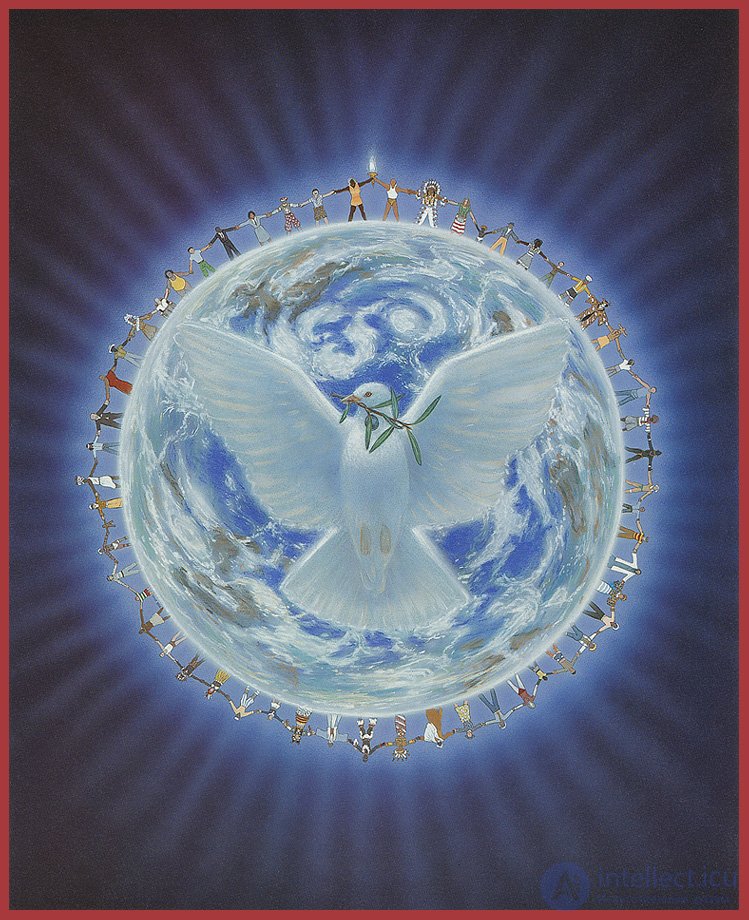 | OPPORTUNITY 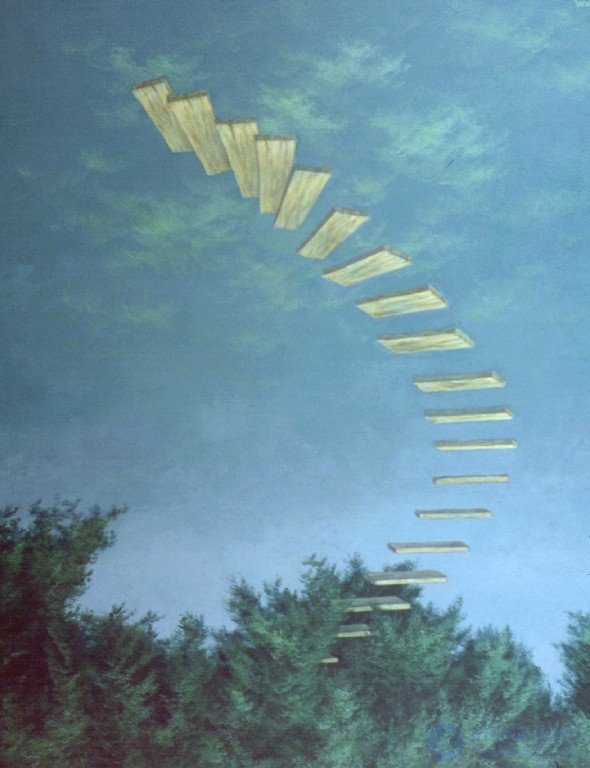 | |
BEING 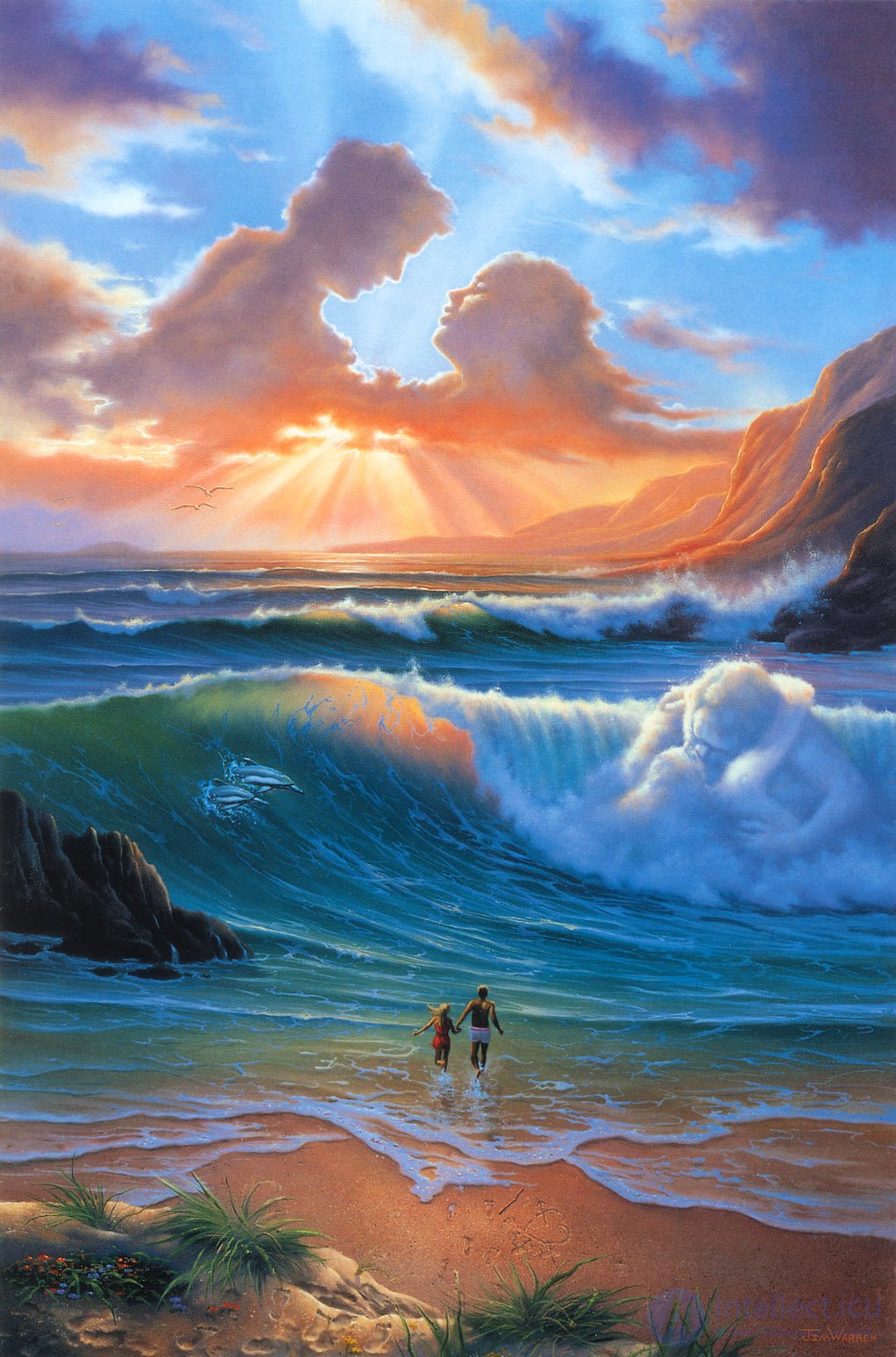 | ABSOLUTE 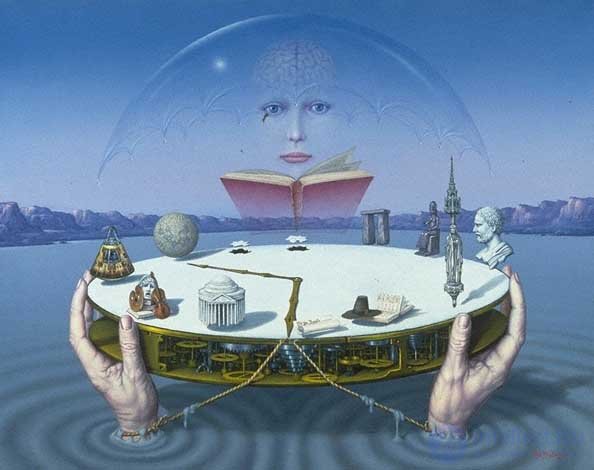 | NOTHING 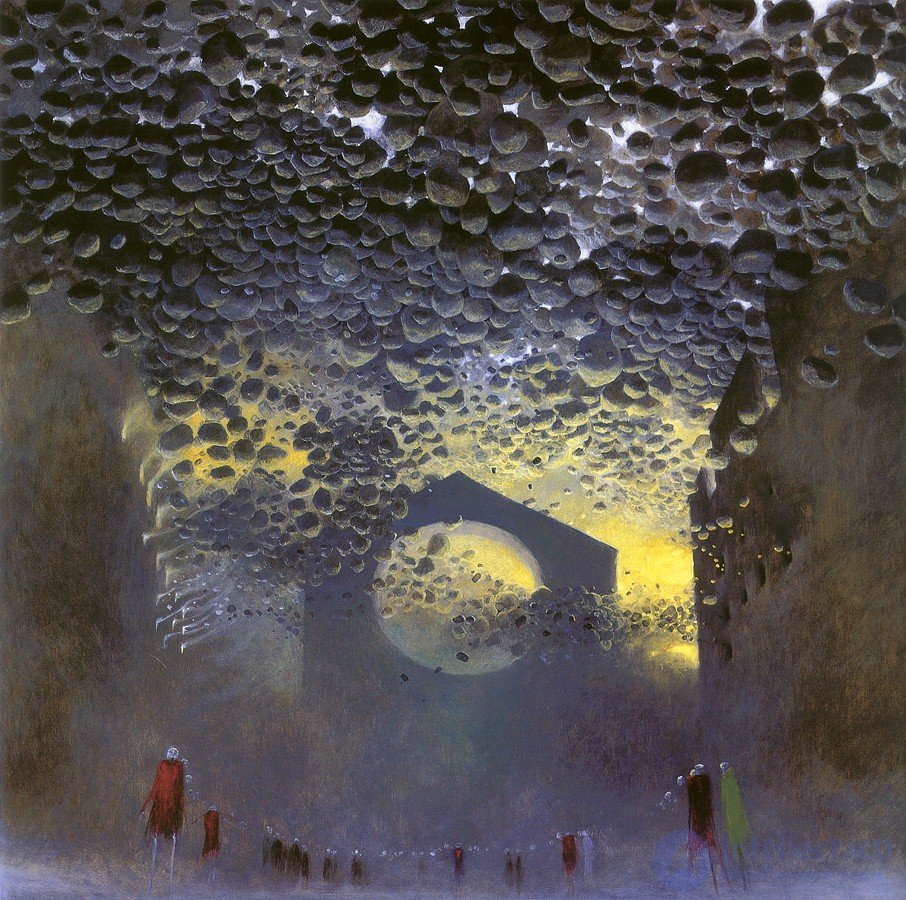 |
INTERACTION  | FREEDOM 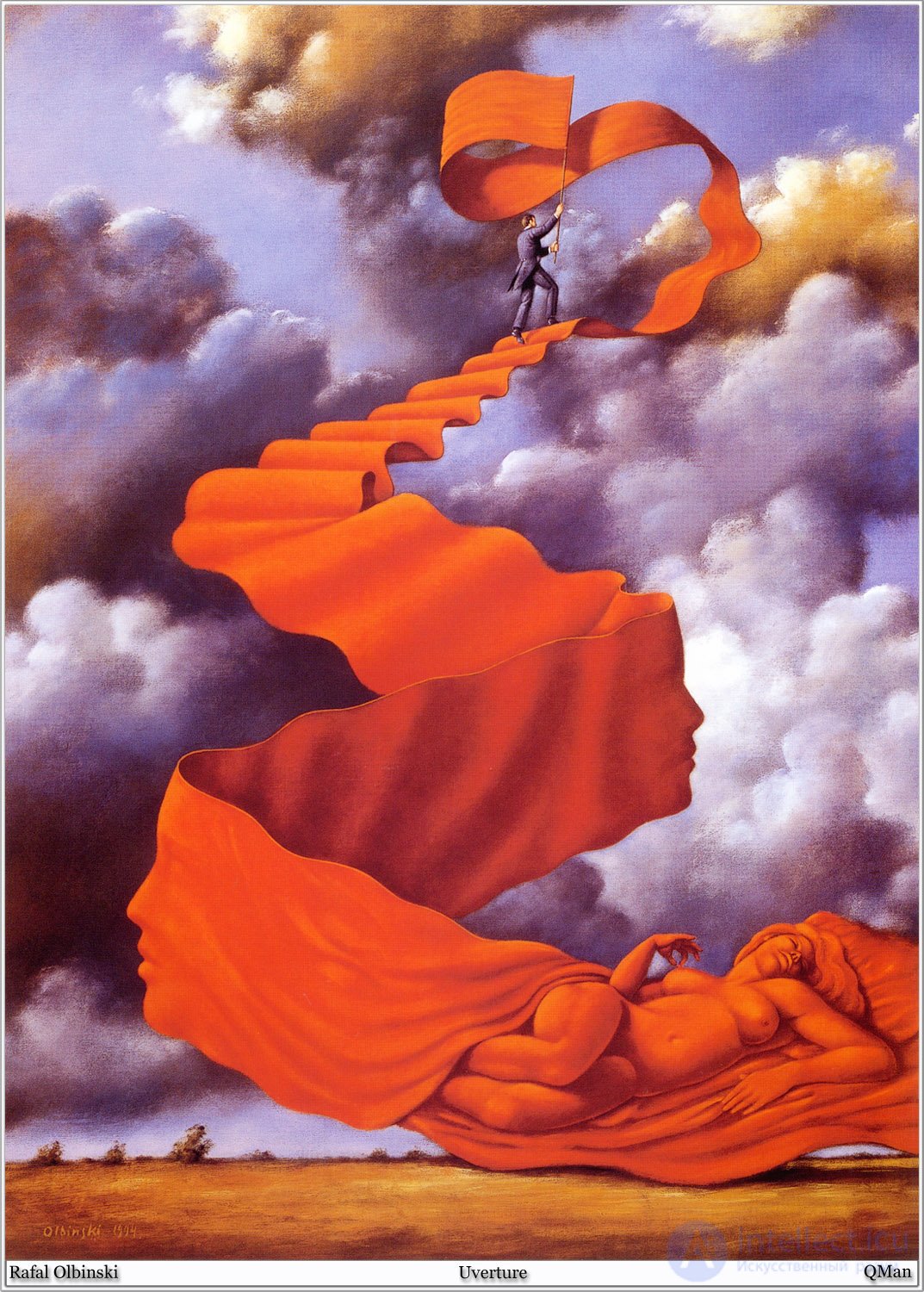 |
| Authors of the pictures: T. Salomoni, R. Olbinski, E. Taylor, Ch. Bragg |
Primordial entities reveal and manifest themselves through universal mechanisms of creativity, which serve as means for the realization of higher meanings, deep structures and contents, constructive means of mastering and using their creative energy.
Table 4 Universal mechanisms of creativity
| WHOLE 1. Holization 2. Transformation | OPPORTUNITY 1. Potentiation 2. Virtualization | |
| BEING Creation embodiment, transformation, perfection | ABSOLUTE The transition from non-being to being, meeting new movement, interpenetration, mutual enrichment of being and non-being 1. Coemanation 2. Universal mimesis 3. Absolute visualization 4. Exaudization 5. Crystallization 6. Sense making 7. Elativization of meaning 8. Crematology 9. Sacralization 10. Mirialization 11. Buisiness 12. Verification 13. Amortization 14. Vigor 15. Efforting 16. Magification 17. Transfers 18. Renovation 19. Revitalization 20. Creative teleportation 21. Transeffect | NOTHING Calling to existence, cultivation sprouting |
| INTERACTION 1. Combining 2. Transfer | FREEDOM 1. Deconstruction 2. Transcendence |
ABSOLUTE
1. Co-emanation (from Lat. Emanatio - outflow, distribution) is a spontaneous flow of creativity, caused by redundancy of creative potential, wealth of the inner world of a person, abundance of his ideas, thoughts, plans, plans and ideas. В основе эманации лежит прорыв в креатологическое пространство совместного сосуществования творца и мира, идентификация с глубинными структурами и творческой мощью Универсума. В этом смысле соэманация предстает как единый процесс становления и развертывания Универсума, Абсолюта, природы и человека. При этом результате спонтанного истечения содержательно-смыслового изобилия, внутренне богатство и творческая сила человека не убывают а увеличиваются.
В то же время позитивное освобождение, преодоление зависимости, обусловленности совершается не отрицанием, деконструкцией и даже не трансценденцией, а путем реализации и утверждения своего истинного творческого Я.
Конституирующей основой данного механизма является универсальный процесс эманации, который включает:
1. Непроизвольно-естественное истечение творческой энергии высшей сферы Универсума и избыточной полноты абсолютного Бытия к низшим, менее совершенным сферам.
2. Имманентное творческое изобилие. Эманация является следствием онтологической и творческой избыточности изначального креационного потенциала, переизбытка творческой мощи Абсолюта (Единого), выступаещего первоосновой мира.
3. Возвращение и восхождение к источнику. Завершающим этапом эманации является возвращение творческой потенции обратно к Абсолюту, посредством волевого преодоления оторванности от истока и достижения творческого «экстаза».
Погружаясь в гармонию с движущими силами Вселенной, человек обнаруживает в глубинах своего существа свернутые универсальные структуры Вселенной, которые и являются его подлинной сущностью, позволяя им спонтанно и свободно развертываться в едином ритме с творческой эволюцией. При этом творческая сущность соэманации состоит в том, что поток творческой мощи человека проистекает не произвольно, но по глубинным законам Универсума и , в то же время, в гармонии со его собственной глубинной сущностью, врожденной творческой силой, представляющей свернутое отражение космического творчества.
2. Универсный Мимесис ( Мимезис) (от др.-греч. μίμησις - подобие, подражание, воспроизведение) понимается как подражание, следование смыслам, глубинной сущности, фундаментальным принципам и целям Универсума. Универсный мимесис проявляется не столько как подражание, но как изображение, форма духовного выражения, репрезентация идеального образца (Аристотель), как подражание исключительно прекрасной природе (Ш. Батте).
Являясь способом выражения живой меры, универсальности и воображаемой идеальной сущности, креатологический мимесис сливается с творческим фантазией и интуицией. Данный механизм представляет собой пересоз¬дание действительного мира, посредством селекции и мо¬дификации реальной предметности, путем реализации приемов и операций, структура которых изоморфна механизмам функционирования невидимых Универсных смыслов.
Мимесис предстает как резонансное совпадение пробужденного внутреннего космического знания и глубинных смыслов мира, переживание радости узнавания скрытым творческим Я своего глубинного, сущностного начала, порождающего ядра Универсума. Голографическая модель мимесиса предполагает, что врожденные архетипы, глубинные универсальные структуры сверхсознания излучают опорные смысловые волны, которые совпадая с восстанавливающими волнами сознания порождают вещественные и символические объекты, которые воспринимаются субъектом не как феномены внешнего мира, а как знакомые, извлеченные из глубин собственной памяти. При этом само видение и даже зрение понимаются как поток согласованных и взаимонаправленных волн излучения и восприятия.
Музыка уже не является зеркалом для человека, она понимается как искусство формировать акустические колебания новым и неслыханным дотоле образом. "Я взаимодействую с абсолютом, с универсумом, и если я благоговею перед ним, я должен творить малый универсум, я должен быть сотрудником абсолюта" (К. Штокхаузен).
Эвокация. В основе мимезиса лежит механизм эвокации (от лат. evocatio - вызывание, призыв) целью которого является не копирование или воспроизводство объекта, а любое его неконвенциональное, нетрадиционное, неожиданное представление, передача ощущения, впечатления, переживания вызванного объектом, выписывание его «души», репрезентация его глубинного смысла.
В японском художественном творчестве подражание вещам (мономанэ) понимается как следование пустоте, тайне, скрытым возможностям и глубинным, невидимым смыслам. Мономанэ - это с одной стороны подражание тому, что есть (дзицу), а также тому, чего нет (ке). Поиск, нахождение и следование сущности духа "Не иди по следам древних, но ищи то, что искали они" ( Кукай).
3. Абсолютная Визуация (от лат. visio –видение, образ) представляет собой видение мира из порождающего ядра и центра Универсума, из смыслового центра культуры, из самой сердцевины потока творчества. Абсолютная визуация –это видение, понимание и переживание объектов с точки зрения Абсолюта (Sub specie Absolute), с точки зрения Вечности (Sub specie Aeternitatis) и с точки зрения Универсума (Sub specie Universum).
Абсолютная визуация проявляется как видение и объединение объектов едиными смыслами, первофеноменами, связывание их глубинными связями и общими возможностями и предстает как сингулярное уравнивание всего множества вещей, имманентно содержащих в себе искорки Абсолюта.
В основе Абсолютной визуации лежит Абсолютная интроекция, понимаемая как вмещение в себя всего Универсума и Вечности, как включение в индивидуальное сознание вселенского сознания, всех реальных и возможных миров, самой природы и процесса образования и развития Вселенной, а также всей полноты социо-культурной реальности и истории человечества. Абсолютная интроекция проявляется как одновременное удержание в сознании, переживание и видение всей панорамы реальных и возможных миров, ламинарного потока их траекторий развития, всего разнообразия и глубины смыслов.
Это не просто введение объектов в контексте Универсума и Вечности, не просто видение в каждом объекте всего Универсума, а в каждом мгновенье Вечности, это взгляд на объект с точки зрения всевмещающего Универсума, ощущение объекта как своей органической части, видение его рождения, траектории развития внутри себя, на внутреннем застывшем многомерном экране Вечности.
При этом все бывшее, существующее и возможное всех объектов и феноменов предстает на единой панораме прошлого и будущего и оказывается в поле видения, которое обладает и глубинным, идущим внутрь экрана смысловым измерением, раскрывающим все существующие и возможные смыслы объектов. Внимание свободно и легко, поочерёдно и одновременно высвечивает объекты, которые существуют одновременно, со сказочным всевластием перемещается в пространственно временном и смысловом поле, со скользящими тонкими усилиями выхватывает, вспоминает, порождает желаемое.
Визуация развертывается не как постепенное эволюционное приращение, не как цепь систематических усилий и даже не как жизненный порыв или свободная трансценденция, а как мгновенное произвольное занятие Абсолютной позиции, решительное овладение новым высшим состоянием и рассмотрение, осмысление и переживание актуальной действительности с абсолютной точки зрения, с последующим последовательным вычерчиванием и построением путей от Абсолюта к реальности. Данное индивидуализированное универсное пространство может быть представлено как предельно свернутая, многомерная точка, которая содержит абсолютно все содержания и смыслы универсума, в которой сконцентрированы универсальные законы космогенеза. Визуация представляет процесс познания как внутренне созерцание, как воспоминание, припоминание, высвечивание и различение феноменов и смыслов на голографической универсной внутренней панораме. Абсолютная визуация основывается на несокрушимой уверенности, что все уже есть что все возможно и доступно что замысел и результат – одно, что они существуют одновременно, соединенные свернутой идеальной траекторией. Абсолютная визуация понимается как свободная активность целостного, полного, однонаправленного сознания, направленного на исследование и использование всего богатства Универсума, всех его миров, его прошлого, настоящего и будущего, находящихся в глубине внутреннего мира.
В восточной философии абсолютная визуация репрезентуется как смрити, как способность удерживать в поле внимания воображаемые объекты, как воспоминание и припоминание всего богатства мира которое уже содержится внутри. Погрузившись в самадхи, восточный художник начинает ощущать в самом себе все нюансы движения природы: порывы ветра бьют его в грудь, раскрывающиеся бутоны цветов нежно трогают его сердце, шум моря порождает вибрацию тела (В.А. Пронников).
Творческая визуация представляет собой наиболее компактный способ сохранения и непосредственного, прямого пробуждения информации. Это овладение некоторой живой самодостаточной генеративной матрицы, которая сама порождает новую и полезную информацию в необходимый момент времени.
Творческая визуация направлена на удержание в сознании предельно целостной картины реальности, при этом каждая точка свернутого вселенского пространства приобретает творческую самодостаточность и самостоятельно развертываясь, порождает новые идеи и образы.
Продолжение следует
УНИВЕРСАЛЬНЫЕ ЛИЧОСТНЫЕ МЕХАНИЗМЫ ТВОРЧЕСТВА
При этом взаимодействие личности с миром носит сложный многоуровневый характер, отражающий некоторую инвариантную трехкомпонентную структуру строения материальных объектов, которая проявляется в целостной иерархической творческой позиции личности, включающей когнитивный, эмоциональный и поведенческий компоненты. В то же время в структуре личности необходимо выделить еще и аксиологический (ценностный) компонент, который пронизывает и насыщает все остальные компоненты и предстает не как отдельный высший уровень структуры, а как ее основание, систематизирующий фактор и центр организации. Основные структурные компоненты творческой позиции личности реализуются в конкретной деятельности с помощью соответствующих личностных механизмов творчества: аксиологический - идеализации, когнитивный - децентрации , эмоциональный - идентификации ,поведенческий - самоактуализации.
В то же время каждый из этих механизмов имеет внутренне диалогическую структуру и, в потенциальном виде, содержит в себе соответствующий противоположный, дополняющий механизм. Творческая активность личности осуществляется посредством попеременной и одновременной активизации полюсов связок противоположно направленных механизмов и поддержания баланса между двумя ними.
В качестве таких взаимодополняющих и взаимопроникающих творческих механизмов, каждый из которых имеет смысл лишь в единстве с противоположным, выступают: идеализация - проблематизация, децентрация - симплизация, идентификация - медитация, самоактуализация - персонификация.
Таблица 5. Двойная спираль механизмов творчества
Таблица 1. Двойная спираль универсальных механизмов творчества
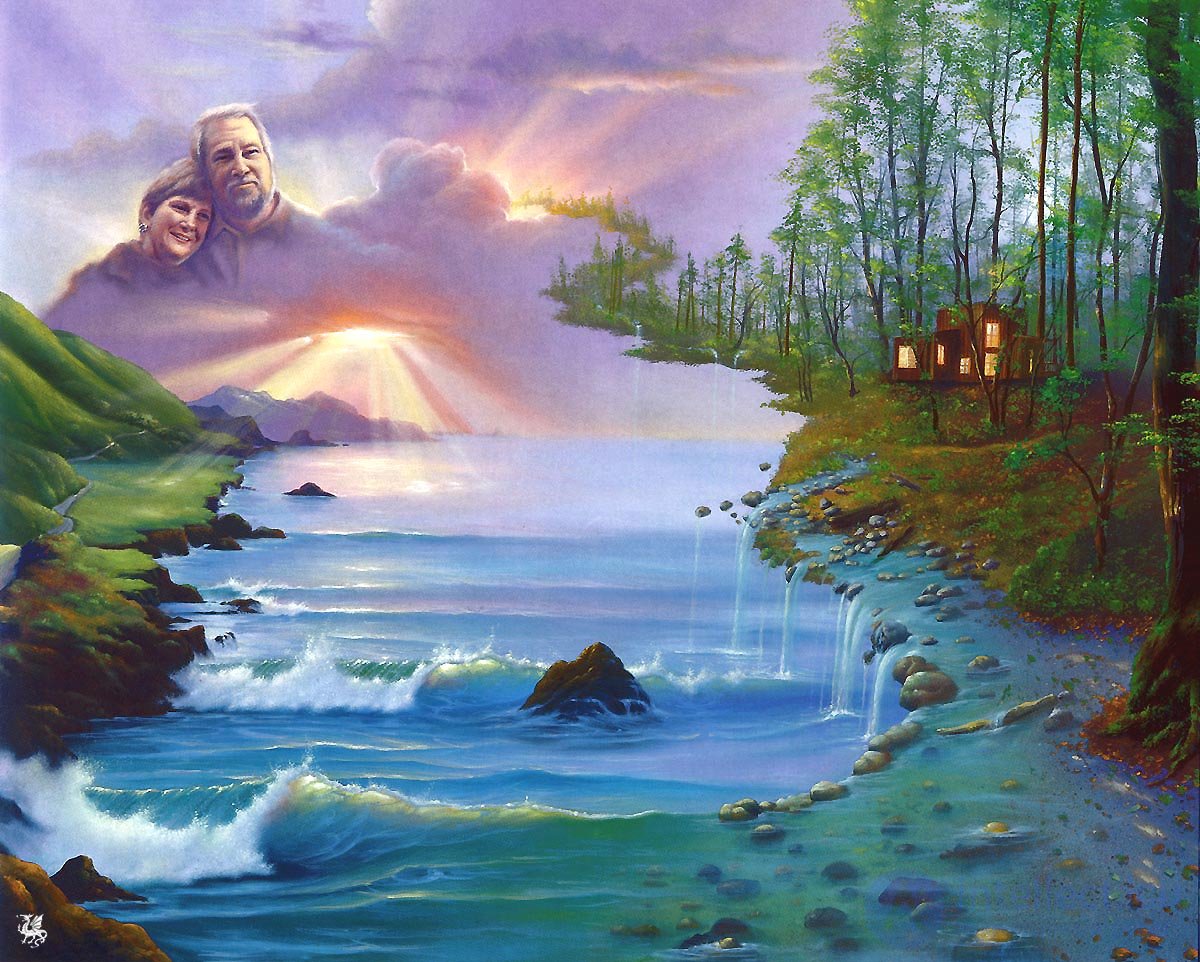 | Идеализация понимается как видение, поиск и раскрытие идеальной сущности объекта и мысленное конструирование его идеального образа, в котором гармонично сочетаются высшие ценности, продуктивно разрешаются ключевые и наиболее назревшие противоречия. Это формирование и реализация идеального плана и сверхзадачи, выдвижение предельно смелых гипотез, предвидение кульминационной точки его развития воплощение прагматичного и эстетического идеала, достижение идеального конечного результата. | Проблематизация представляет собой выявление и обострение сущностных противоречий объекта, процесс поиска и определения ключевой проблемы. Это восприятие и поиск недостатков объекта, его пробелов, дисгармоний, асимметрий и несовершенств. Это стремление к расщеплению целостного объекта, нахождение его противоположных качеств, видение его темных сторон и "теней". |  |
| Реализация связки механизмов «идеализация –проблематизация» проявляется в выявлении ключевого противоречия объекта, события и проблемы, и его устранения путем реализации идеального плана и достижения идеального результата. | |||
 | Децентрация проявляется как процесс генерирования различных подходов к объекту, изменение привычных и традиционных установок, принятие во внимание всех возможных точек зрения на объект. Это процесс преодоления инертности мышления, функциональных фиксированностей, отклонение от стереотипов и шаблонов, расшатывания и разрушение традиционных представлений, мысленная замена привычных связей на необычные. Это процесс продуцирования различных нестандартных идей и необычных образов и неожиданных решений. | Симплизация понимается как предельное упрощение и прояснение сущности объекта, избавление от всего запутанного, временного и незначительного, как достижение легкости, ясности и прозрачности формы и в то же время глубины и точности содержания. Это способность выражать всю сложность объекта с помощью простых и ясных понятий, наглядных и емких моделей, умение выбирать наилучшие комбинации и идеи на основе критериев скрытого порядка, гармонии и красоты. | |
| Связка механизмов "децентрация - симплизация" проявляется как генерация разнообразных идей и выбор самых элегантных и эффективных вариантов, как пульсирующие взаимопереходы между сложностью и простотой, многозначностью и ясностью, асимметрией и симметрией. Процесс генерации гипотез и их верификация; создание новых комбинаций и их отбор (А. Пуанкаре, 1903); реорганизация опыта и создание на основе его элементов новых комбинаций (З. Петросинский, 1961); спонтанность и направленные трансформации Д. Фелдман (1988), случайные изменения и их отбор DK Simonton (1988) (осуществление выбора по стабильным критериям, вытекающим из требований адаптации). | |||
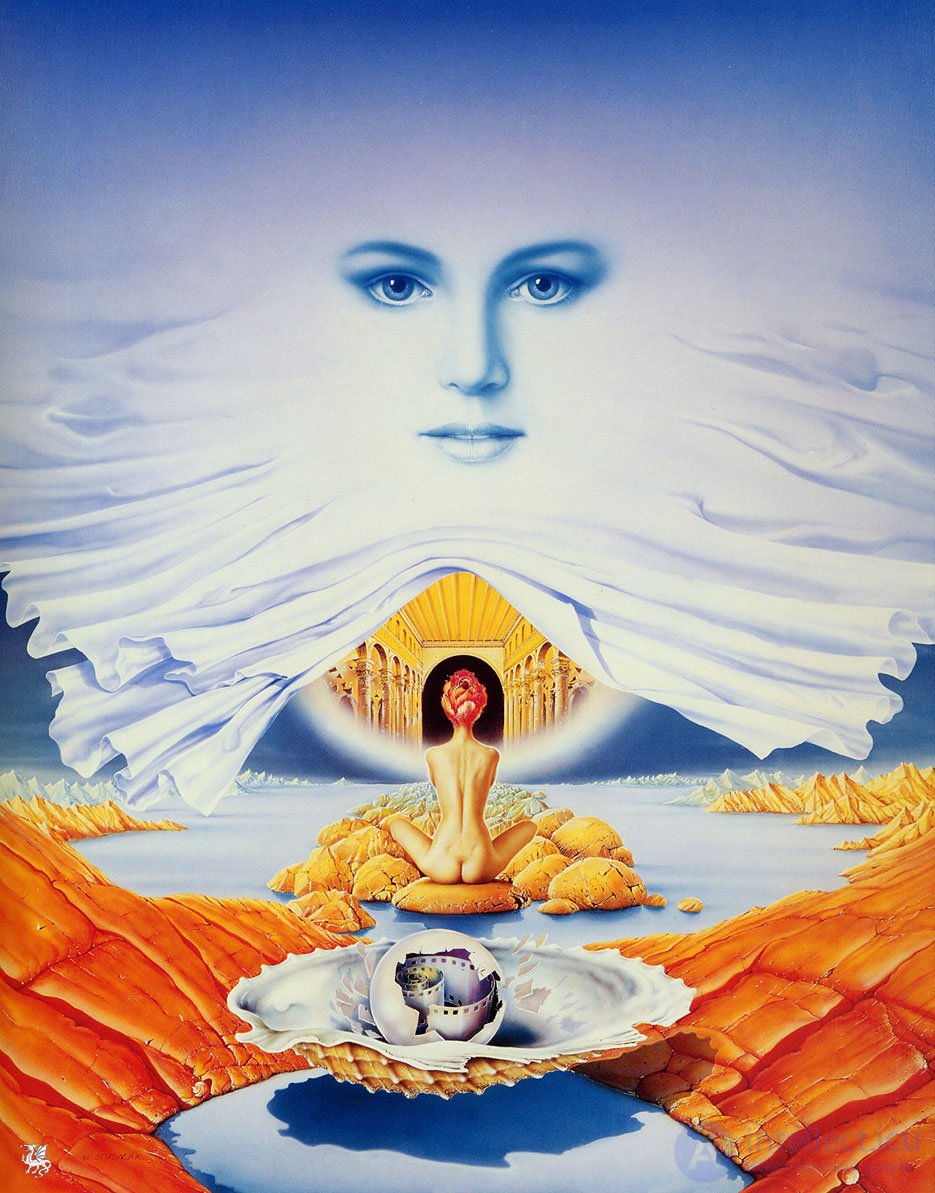 | Медитация проявляется как отстранение, отрешение и чувственная изоляция от внешнего и внутреннего мира, как дистанцирование от объектов взаимодействия, достижение состояния углубленной сосредоточенности, освобождение от своего субъективного "Я" и от зависимости от объектов внешнего мира. Это видение мира и себя в новом свете, беспристрастное, свежее и чистое восприятие сущностных признаков, связей и свойств. | Идентификация это отождествление себя с другими людьми и объектами окружающего мира, активное вживание в них, а также переживание своих связей и отношений с ними. Она осуществляется с помощью активного погружения и воплощения в объекты живой и неживой природы, перенесение себя в их время, пространство и причинность, переживание и познание их внутренних импульсов, обстоятельств и логики развития | 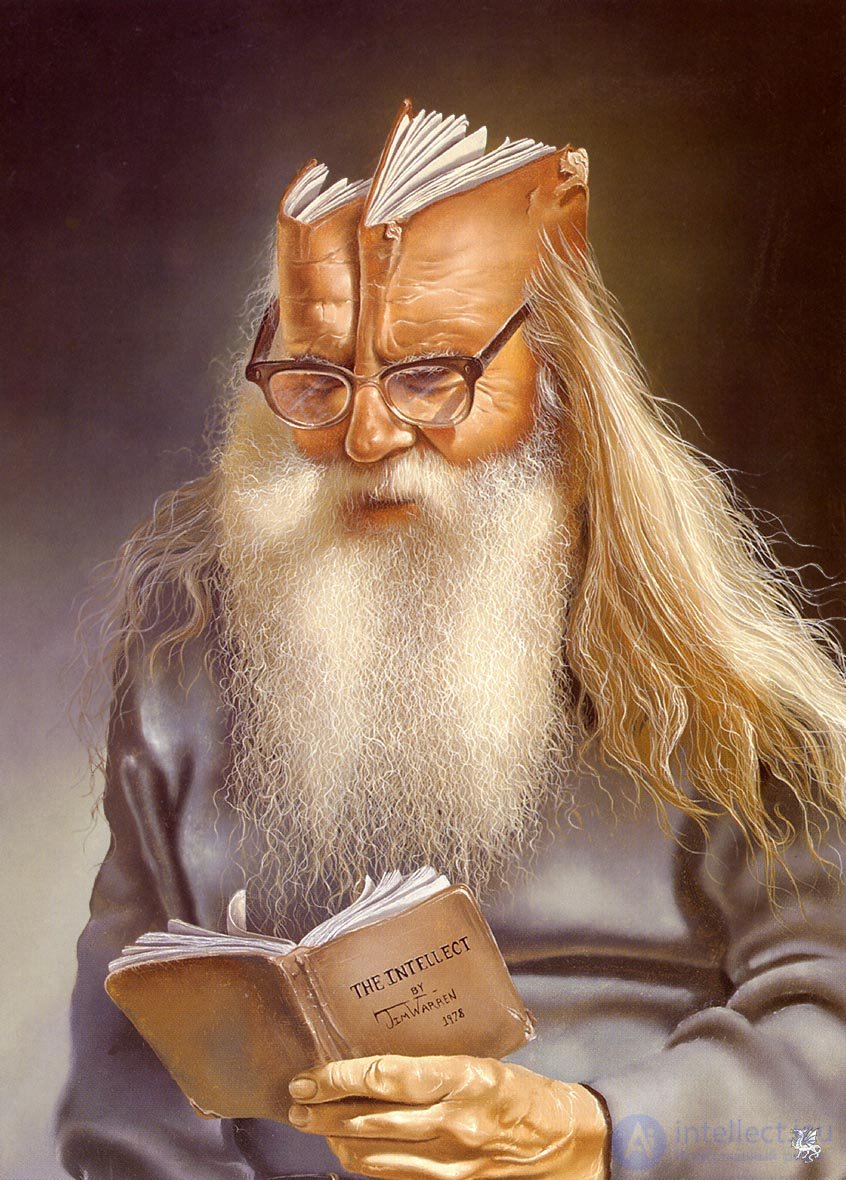 |
| Связка "идентификация - медитация" проявляется во вживании в объект и “занятии позиции вненаходимости (М.М.Бахтин), в реализации аттитюда "отсоединенная принадлежность" (detached attachment), (D.Riesman), в полициклическом вживании и остранении от объекта, для того чтобы сделать незнакомого знакомым, а знакомое чужим. (У. Гордон) | |||
| Самоактуализация понимается как наиболее полная и спонтанная реализация личностью своих возможностей, резервов и потенций, искреннее, спонтанное самовыражение, свободное проявление и утверждение своего истинного Я. Целостная самореализация предполагает внутреннюю активность личности, способность прилагать усилия, направленные на реализацию идеальных проектов, планов и моделей, на самомобилизацию, наиболее полное раскрытие потенциала личности и целостную самореализацию творческих возможностей. | Персонификация представляет собой оживление и одухотворение объектов, наделение их наделение их субъектностью, самостоятельностью и активностью, предоставление им права на саморазвертывание и свободную активность, позволение им существовать по собственным правилам и законам. Это смелое распахивание навстречу миру, подчинение ему и использование его энергии и возможностей. В то же время это создание самостоятельных и саморазвивающихся структур, способных к поиску и продуктивному разрешению противоречий, а также к самостоятельному продвижению к идеальной цели. |
|
| Связка "самоактуализация - персонификация" проявляется как процесс чередования свободного самовыражения и самоотречения, подстраивания, подчинения миру, спонтанной активности и “активного не-деяния”, завоевания среды и подчинения ей, совершения преобразовательных усилий и использования энергии объектов и среды. | |||
Марков С.Л. Соціально-психологічні механізми творчої взаємодії зі світом.//Актуальні проблеми психології: традиції і сучасність. - Т.2. - Київ: Інст.психології, 1993. С. 173-180.

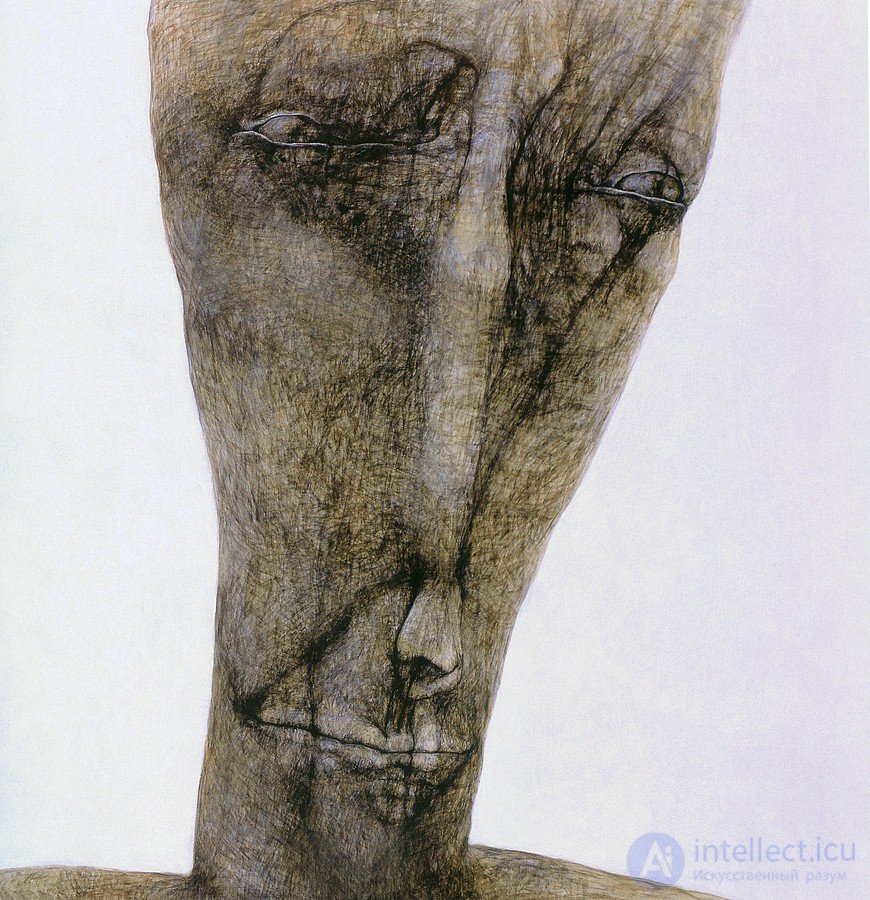


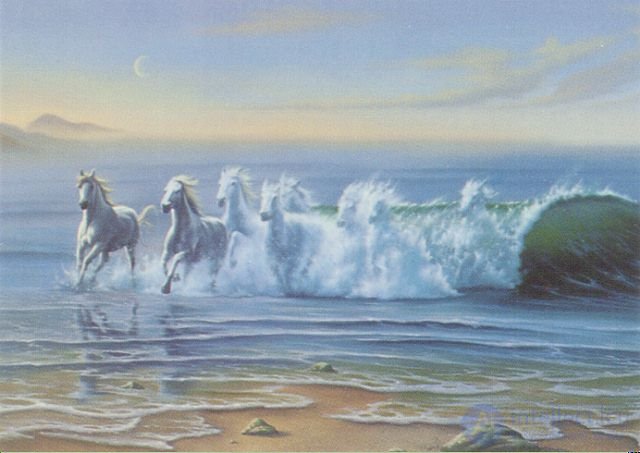
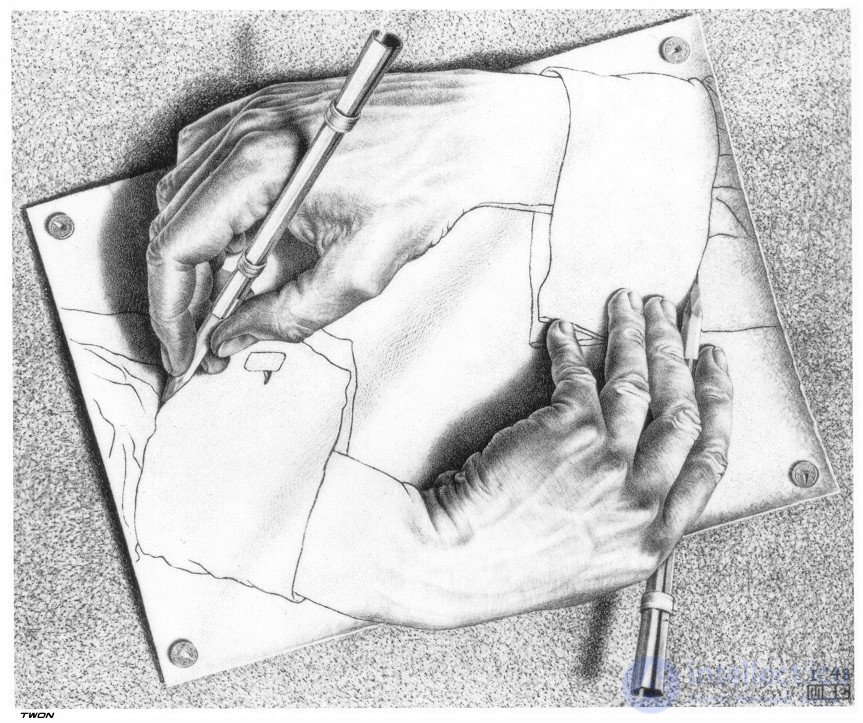
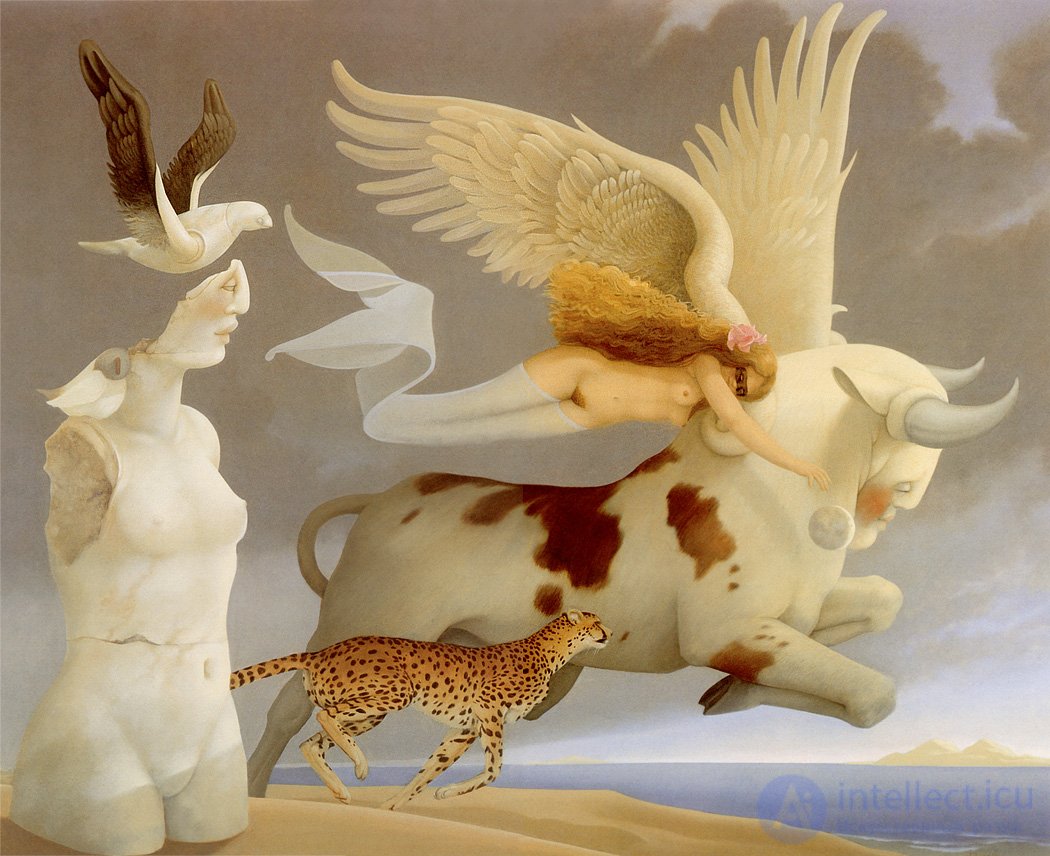

Comments
To leave a comment
Psychology of creativity and genius
Terms: Psychology of creativity and genius